Copy this text to your clipboard and paste into your CMS

The Tourism Recovery in South East Asia: Twelve Months On
Endemic is not a word you tend to hear today. Rewind twelve months, and it was hard to avoid throughout South East Asia. Politicians talked frequently about “a transition to endemic.” With target vaccination rates achieved, Omicron infection curves falling and economies under pressure, governments prepared their citizens to “live with Covid.” This was a prerequisite to restore international mobility after two years of airtight restrictions on travel.
One year ago, on 1 April 2022, the borders fully reopened in Singapore, Malaysia, Indonesia and the Philippines as quarantine mandates were removed. Cambodia and Vietnam had recently reopened. Thailand, although open for tourism since November 2021, still required a lengthy online visa application, a Covid test on arrival and a one-night stay in an assigned hotel until a clear test result was confirmed. Laos would reopen in early May.

Malaysia was one of the first Southeast Asian countries to reopen to tourists. Photo by Esmonde Yong on Unsplash
It marked an important milestone for a region that had battled to resurrect travel activity via risk-averse travel bubbles, vaccinated travel lanes and sandboxes. Residual restrictions remained in place, such as pre-departure tests, masking and showing a vaccine certificate, but these would soon be phased out. While South East Asia unlocked its airport gates, North East Asia remained shut. Japan, Hong Kong and Taiwan wouldn’t drop their travel restrictions until October, and China would wait until 8 January 2023 to reopen.
One year after South East Asian flyers took to the skies once more, the anniversary passed unnoticed. Travellers tend to look forward. The travel industry’s eye are focused further in the past. Restoring visitor arrivals parity with pre-pandemic 2019 is the primary objective.
A more worrying development also explains the muted celebrations. Dry season has arrived in mainland South East Asia. With it comes farmland and plantation burning on a huge scale to facilitate agricultural renewal. The unwanted outcome is acrid smoky air hanging over the region. On Saturday 1 April, parts of Thailand, Cambodia, Laos, Myanmar and Vietnam experienced air quality deemed unhealthy. Although the rainy season continues in Malaysia and Indonesia, a smoky drift from the north can be seen and smelt in the mornings in Kuala Lumpur. Once dry season commences, daily life in both countries and Singapore is likely to be impacted by the “transboundary haze” – perhaps for several weeks or even months.
Toxic smoke clouds are causing concern for the tourism industry just as it starts to recover. Last weekend, authorities in Chiang Mai, a popular tourism destination in Thailand, handed out face masks to locals to protect them from breathing airborne particulates. April is a vibrant month for cultural celebrations that attract tourists. After three years of Covid gloom, hopes were high for tourist-friendly Songkran reveries in Thailand, Khmer New Year in Cambodia and Eid al-Fitr festivities across the region. If the burning continues, it could spark booking cancellations for China’s five-day May Golden Week, starting on 29 April, which South East Asian nations are hoping will kick-start the return of Chinese tourists in larger numbers.
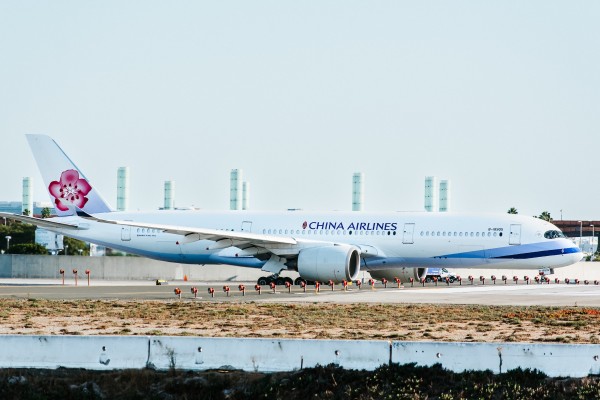
China is a key source of tourists for many Southeast Asian countries. Photo by Lukas Souza on Unsplash
Air quality issues are clouding a buoyant first quarter for travel and tourism in the region. After a slow start last April, air passenger numbers and visitor arrivals increased notably in the final months of 2022, and 2023 began positively. Airlines are restoring flight routes and frequencies, and airport are busier and customs lines noticeably longer. The travel buzz is definitely back although tourist volumes remain well below the record 2019 levels.
Airline seat capacity in South East Asia in March was 20 percent lower than the same month in 2019. Domestic air capacity is recovering fastest, down just 13 percent from March 2019, while international air capacity remained 31 percent lower, according to OAG. The scaling up of outbound travel activity from China, which began its vastly expanded summer schedules for airlines at the weekend, will bolster South East Asia’s airport traffic over the coming months.
Competition among destinations to attract tourists is being fiercely fought. Increasing travel activity in 2023 from Asia Pacific countries is helping. In 2019, China was the top visitor market for the 10 countries of South East Asia, contributing 22.5 percent of all visitors. South Korea ranked 4 th , Japan 7 th , Australia 11 th , Taiwan 15 th and Hong Kong 23 rd . Four of South East Asia’s top 10 visitor markets were located within the region itself, Singapore (2 nd ), Malaysia (3 rd ), Thailand (5 th ) and Indonesia (6 th ). All countries are now watching each other’s travel promotions assiduously and marketing hard to entice each country’s tourists.
Thailand, which is South East Asia’s most visited country, leads the way. In the first quarter of 2023, it welcomed 6.15 million visitors, more than half the 11.15 million that visited across the 2022 calendar year. The Tourism Council of Thailand forecasts 30 million visitors this year, which would represent a 75 percent recovery from 39.9 million in 2019. Vietnam greeted 2.7 million visitors from January to March this year, compared to 3.6 million in all of 2022. In the first two months of 2023, Singapore’s Changi International Airport handled more than one quarter of total passengers in 2022.
All of this is happening against a backdrop of high airfares, a situation unlikely to improve anytime soon. “I see airfares going higher and higher,” Shukor Yusof, CEO of Malaysia-based Endau Analytics, told The South East Asia Travel Show in March. “Airline capacities have not yet risen back to pre-pandemic levels to cater for the number of people travelling at the moment, and some carriers are not back to 100 percent in terms of putting planes back into their fleets.”

As tourism continues to grow across Southeast Asia after the pandemic, the high cost of travel is having an impact.
It's not all about air travel in 2023, though. South East Asian nations will invest heavily to expand rail infrastructure over the next decade, but two projects developed before the pandemic offer exciting travel possibilities. The China-Laos railway, which connects the Chinese city of Kunming and the Lao capital Vientiane is scheduled to commence cross-border trips later this month. The railway opened in December 2021, but offered journeys only within the stunning landscapes of Laos while China’s borders were closed.
Also highly anticipated is South East Asia’s first high-speed railway, slated to launch in July. Part-financed and built by Chinese rail technology and contracting firms, the 142km line connects Indonesia’s capital Jakarta and its third-largest city Bandung. Manufactured in the Chinese city of Qingdao, the high-speed trains will travel at up to 350kpm, can withstand earthquakes and feature a livery inspired by Indonesian Komodo dragons. The launch will create a great deal of tourism interest and, most likely, clarification about plans to extend the high-speed railway from Jakarta to Surabaya. “This will be a ground-breaking moment in the history of rail travel in South East Asia,” says James Clark, Editor of the Future South East Asia newsletter.
- Asia Media Centre
Other relevant stories
Subscribe to Asia Digest
Tourism Is Surging in the U.S. and Europe. But in Asia, Many Destinations Are Struggling to Come Back to Life
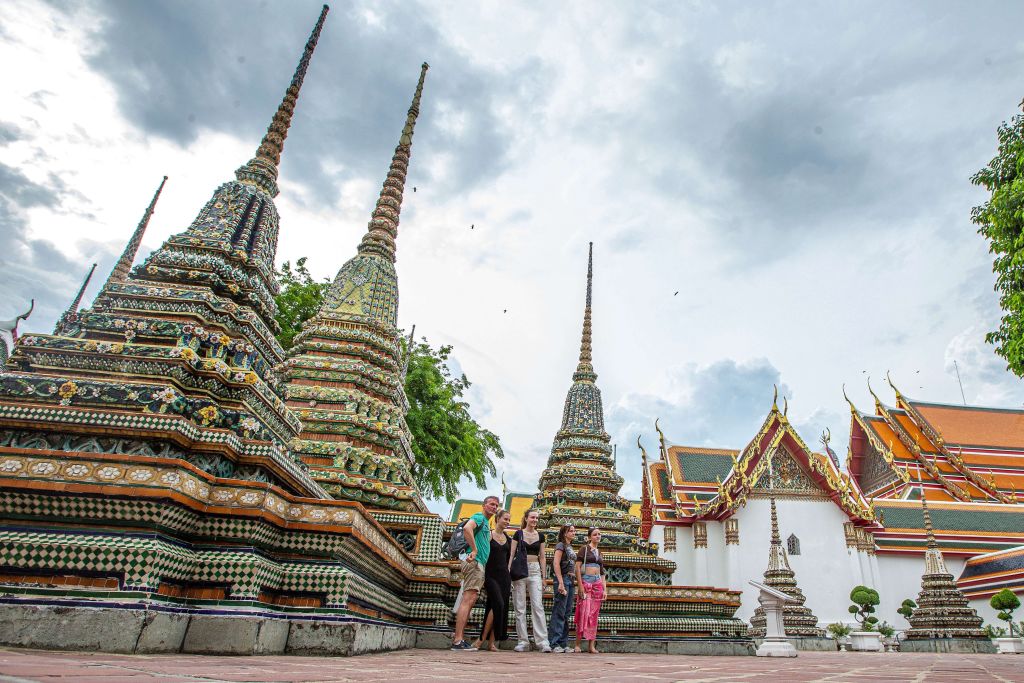
H uoch Yen worked hard to become a tour guide at Cambodia’s famed Angkor Wat temples. It took the 43-year-old three attempts to pass a test for a license to guide Spanish-speaking tourists around Siem Reap, where the famous monuments are located—to say nothing of the years spent studying the language.
When the COVID-19 pandemic put the brakes on tourism in 2020, Yen decamped to his hometown in Kompong Cham province, a five hour drive away, where he now works as a teacher. But he still dreams of returning to his job as a guide.
“I contact my friend who is living in Siem Reap to ask him about tourism every day,” says Yen. “He still tells me that it’s not going well. There are limited tourists right now—it’s not like before.”
Before coronavirus struck, Angkor Wat was one of the world’s most crowded tourist spots. Throngs of travelers from across the globe would arrive each day before dawn, jostling for a spot across a small pond from the main temple complex. There they would attempt to take photos of the sunrise in an atmosphere resembling a mosh pit.
These days, it’s very different. The Southeast Asian nation is hoping to notch a million international visitors this year—a big increase on the paltry number of visitors it welcomed in 2021, but a huge fall from the 7 million that visited in 2019 .

As tourists elbow through the crowd to take selfies at Rome’s Trevi Fountain, or swarm the Strip in Las Vegas, many once crowded tourist spots in Asia-Pacific, like Angkor Wat, remain eerily quiet.
In June, the white sand beaches of Boracay—the most popular island in the Philippine archipelago—were largely free of foreigners . Earlier this month, tourist boat operators on Phi Phi —the Thai islands made world famous by Hollywood movie The Beach (2000)—were complaining that visitor numbers were “not even half” their pre-pandemic levels . In nearby Phuket, and in the Thai capital Bangkok, guides and drivers told TIME that they had had no income for over two years.
Read More: Can Barcelona Fix Its Love-Hate Relationship with Tourists?
A two-and-a-half hour flight away in Hong Kong, there are concerns that the iconic Star Ferry—once rated the world’s “ most exciting ferry ride ”—could go bust for lack of passengers. Japan, which hosted more than 30 million tourists in 2019, welcomed just 1,500 leisure travelers between June and July—normally peak travel season. In April, dive instructors and hotel staff in Palau told TIME that tourists, which accounted for almost 50% of the pristine Pacific nation’s GDP before the pandemic, hadn’t yet returned in meaningful numbers.
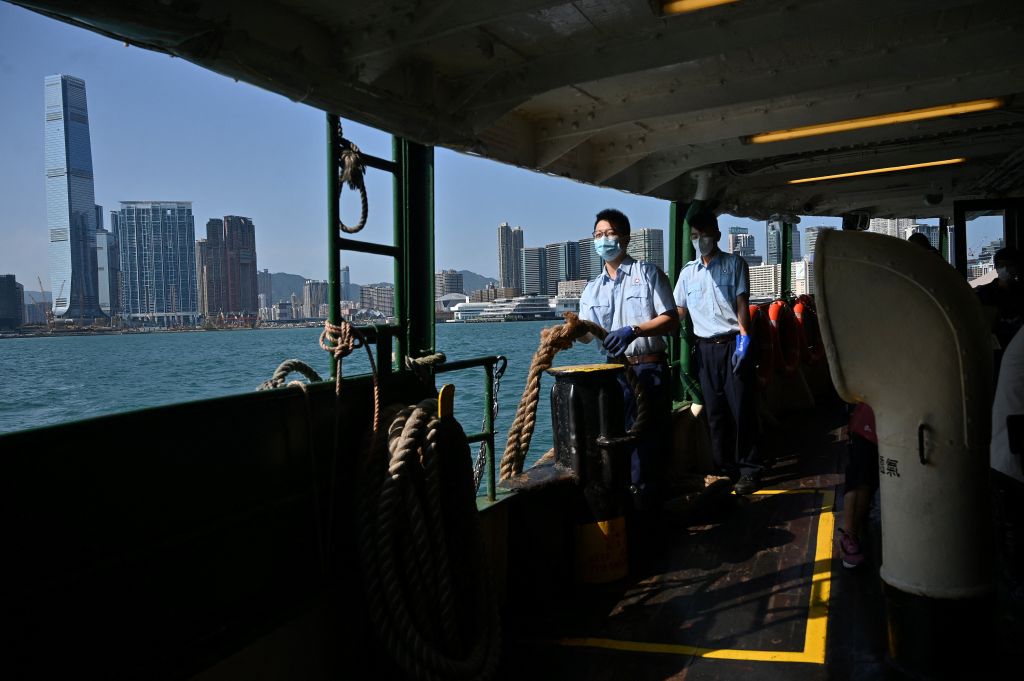
Asian tourism’s uneven recovery
According to the United Nations World Tourism Organization, international tourist arrivals in Asia-Pacific, from January to May 2022, were 90% below 2019 levels—making it the worst performing region globally. Many experts predict that it will continue to lag behind.
Domestic and international traffic within Asia-Pacific this year is expected to reach only 68% of 2019’s figures. Travel is not forecast to hit pre-pandemic levels until 2025, a year behind the rest of the world, according to the International Air Transport Association (IATA). For some destinations, the rebound may take even longer. Tourism in India won’t fully recover until 2026, according to a report by National Council of Applied Economic Research (NCAER).
Asia’s slower recovery is due to myriad factors like the staged opening of markets, the phased restoration of routes and capacity, and the “consumer misperception” that traveling to the region is complex because of ongoing COVID restrictions, says Liz Ortiguera, the CEO of the Pacific Asia Travel Association (PATA).
But there is no denying that Asia’s pandemic rules can spoil the vacation mood. Bhutan is closed to visitors until September. Singapore still requires people to wear masks indoors. Vietnam requires masks in public places, as does Hong Kong, where a self-funded three-day hotel quarantine is required for all arrivals, followed by several days of medical surveillance at home. The latter involves twice-daily temperature checks, uploading daily RAT test results to a government website, and taking three PCR tests in a five-day period.
Read More: Is the Summer of Revenge Travel Here?
Japan is currently requiring tourists to join organized tours. That’s been difficult for Kyoto tour guide and taxi driver Hiroshi Yano , who has depended on government subsidies, and ferrying locals around instead of tourists, to make ends meet during the pandemic. He says there’s much less work without the millions of tourists that used to flock to Kyoto each year, walking from temple to temple to take photos dressed in rented kimonos. “Not only I, but other small-scale businesses, like small hotels and restaurants, are still suffering,” he tells TIME.
The absence of Chinese travelers is a particularly big problem for the region. Thirteen Asian countries relied on China as their top source of visitors, and they were the second-largest source for another six economies, according to the Economist Intelligence Unit’s Travel-ready Index for 2022 . But fearing that its citizens may return home with the virus, Beijing has been restricting “unnecessary” overseas travel as part of its draconian pandemic measures . The recent stranding of thousands of domestic travelers in China’s resort island Hainan, after a COVID outbreak there, will also make many reluctant to risk travel within China itself.

Some destinations are faring better than others. The Maldives, which receives a big portion of its tourists from nearby India , is among places seeing a quicker rebound. Steven Schipani, a principal tourism industry specialist at the Asian Development Bank, says that the Maldives’ international visitor arrivals are now close to pre-pandemic levels, thanks to a rapid vaccination campaign, good air connectivity with large source markets, and streamlined entry requirements.
June arrivals in Fiji were meanwhile 73% of the same month pre-pandemic. And even though COVID restrictions remain in Indonesia, Andrew Roberts, who owns the Padang Padang surf camp in Bali, tells TIME that he’s seen a steady flow of tourists coming back to surf the island’s world-class breaks, such as the towering waves of Uluwatu. Accommodation at the camp has been at pre-pandemic occupancy levels for some weeks now.
Asia-Pacific travel is “a sleeping dragon that is waking up in stages,” says Ortiguera. “Recovery is highly uneven right now, but domestic tourism has developed, travelers have been attracted from new source markets and more lesser-known destinations are being marketed.”
Read More: Revenge Travel May Be a Big Problem for Places Like Thailand’s Maya Bay
She argues that this is a pivotal time for a shift towards a healthier, more sustainable travel industry—and indeed, many see this moment as a chance to do away with over-tourism.
“Over-dependence on international tourism and the need for some Asia-Pacific countries to diversify their economies was an issue even before the pandemic,” Schipani says. “Now, many countries are redoubling their economic diversification efforts.”
Tourism workers on the front line, though, are pinning their hopes on a quick rebound. Yen, in Cambodia, plans to go back to Angkor Wat to work as a tour guide as soon as he can. “I can earn much more as a tour guide than as a teacher,” he says. “I can meet many people around from around the world and get new experiences.”
In Hong Kong, 32-year-old Carrie Poon, misses her old life. Before the pandemic, she led food tours, taking mostly American and European visitors to off-the-beaten track neighborhoods to try local delicacies like fish balls and rice rolls—even snake soup for the more adventurous. But when Hong Kong sealed its borders, she lost her income and decided to open a small restaurant.
“I loved my tour guide [life] so much,” she says. “If I could choose I would definitely pick the tour guide job but it’s, like, what can you do?”
— With reporting by Aidyn Fitzpatrick/Phi Phi, Thailand
More Must-Reads From TIME
- The 100 Most Influential People of 2024
- Coco Gauff Is Playing for Herself Now
- Scenes From Pro-Palestinian Encampments Across U.S. Universities
- 6 Compliments That Land Every Time
- If You're Dating Right Now , You're Brave: Column
- The AI That Could Heal a Divided Internet
- Fallout Is a Brilliant Model for the Future of Video Game Adaptations
- Want Weekly Recs on What to Watch, Read, and More? Sign Up for Worth Your Time
Write to Amy Gunia/Hong Kong at [email protected]
Southeast Asia Tourism Recovery Dashboard
Tourism recovery summary.
Intl Arrivals Jan 2019 - Jan 2024
Recovery vs 2019
Top Travel News
» Green tourism corridor at Preah Jayavarman-Norodom Phnom Kulen National Park planned
» Chinese arrivals in Q1 2024 to Cambodia reach 190k, +43% YoY
Intl Arrivals Jan 2019 - Feb 2024
» 27 Lion Air Group flights to/from Manado cancelled since 18 Apr due to Mt. Ruang eruptions
» Gov’t rumoured to be holding discussions on national tourism tax implementation through flight tickets
Intl Arrivals Jan 2019 - Dec 2023
» New tourist train from Guiyang to Vientiane to launch on 8 May
» Luang Prabang receives 110k tourists over Pi Mai, +364% YoY, generates over $47 mil USD
» March 2024 MATTA Fair attracts 170k visitors, generates RM230 million in sales
» MYAirlines air operator certificate revoked by CAAM
Intl Arrivals Jan 2019 - Jul 2020
» Ayeyawady beaches see 32,712 domestic visitors over Thingyan
» MAI signs interline agreements with Etihad Airways, Himalaya Airlines
» Philippines welcomes 1.9 mil int’l tourists YTD as of 24 Apr
» MoU signed to launch city-check in facility in SM City Clark for passengers of Clark Int’l Airport
Intl Arrivals Jan 2019 - Mar 2024
» MBS reports a $597 mil USD EBITDA in Q1 2024, +51% YoY
» Singapore’s first “Zero energy” hotel to open in 2028 at Changi T3
» Minimum daily wage hike to 400 THB postponed; wage committee’s decision to be announced 1 Oct
» 21-day Songkran attracts 1.9 mil int’l arrivals, +38% YoY, and generates 140 bil THB in revenue
» Dien Bien welcomes 845k pax, 1.86X YoY from Jan-Apr YTD 2024
» Danang Airport’s international terminal to become smart terminal
✉️ Stay Updated With Weekly Updates
Sign up to receive weekly updated news for each country directly to your inbox. Keep informed and make the right decisions.
Easy-to-read summary with the key facts you need to know on how the Coronavirus is affecting both inbound and outbound tourism.
Coverage of Cambodia, Indonesia, Laos, Malaysia, Myanmar, Philippines, Singapore, Thailand and Vietnam.
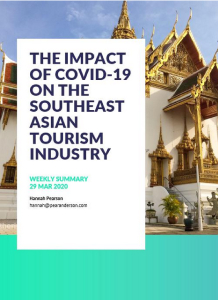
Latest Travel Industry News and Analysis to Inform Your Decisions
Pear Anderson has been tracking the travel industry impact of COVID-19 and its subsequent recovery in Southeast Asia.
Easy-to-read summary to stay updated of the status of each country. Use this information to stay informed of the opportunities, and know when the right time is to act. Contact us for bespoke reports or information .
Who this is for
- National and regional tourism boards who need regular updates on source markets
- Travel agents to understand likely outbound tourism destinations
- Tour operators, attractions & hotels who want to know what’s going on, and when to start marketing for inbound tourism
- Tourism professionals looking for a comprehensive summary of how COVID-19 is affecting the industry in Southeast Asia
Featured Clients

Let's Work Together
Your privacy.
We want to use cookies to improve your user experience. Let us know if you agree.
Google in Asia
Southeast Asian travelers are back
Apr 26, 2022
[[read-time]] min read
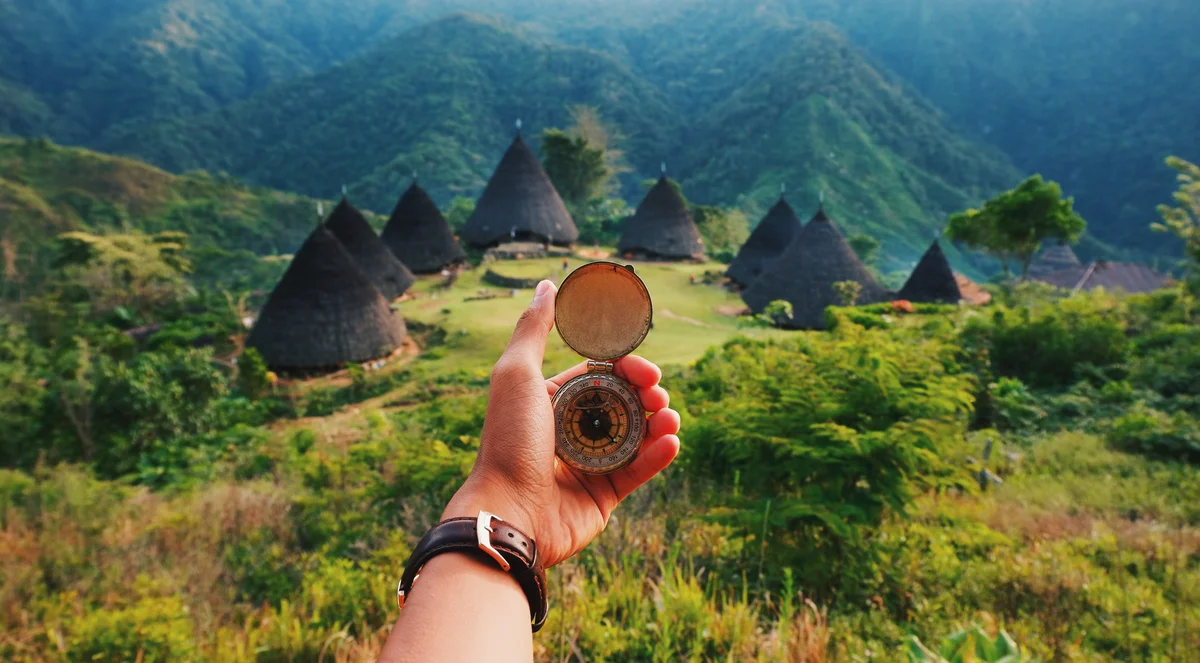
Before COVID-19, the countries of Southeast Asia were some of the world’s most popular travel destinations. The pandemic changed that in a matter of months — with devastating repercussions for the region’s $380 billion tourism industry . In early 2022, though, the tide started to turn again. Southeast Asian nations have eased travel restrictions, and the region’s travelers are eager to make up for lost time. They’re committed to traveling more frequently, open to new destinations, and determined to make the most of the opportunities that are now opening up.
To understand these travelers’ preferences and expectations — and the opportunity that resurgent demand creates for the region’s tourism operators — we took a closer look at some recent Google Search trends.
Resurgent demand
In Southeast Asia, inbound travel demand – visits by non-residents to a country – has experienced the fastest upturn in the Philippines and Indonesia, based on search volumes. In March, inbound demand for the Philippines had already surpassed pre-pandemic figures (hitting 104% of pre-pandemic search volumes), while Indonesia is close to a full rebound too (94%). These two countries have also seen the fastest resurgence in outbound travel – visits by their residents to other countries – with search volumes bouncing back to 70% of pre-pandemic levels. Singapore is in third place for both inbound and outbound travel demand.

Travelers crave luxury and care about sustainability
While the surge in demand is welcome, it’s important that the industry understands and caters to travelers’ changing needs . Search trends make it clear that the travel environment today is more complex than it was before the pandemic.
- People are spending more time researching, planning and finding options, seeking peace of mind, and making sure they’re covered for unexpected changes. We saw year-on-year growth of more than 165% in travel insurance-related searches in Singapore, Malaysia and the Philippines.
- Tourists are keen to stay longer when they do travel: interest in vacation rentals among Southeast Asian travelers rose by more than 1010% year-on-year.
- “Revenge travelers” — those most eager to make up for lost time — are ready to pay for premium travel options. Among travelers from the Philippines, searches for “luxury resorts” and “beach resorts” are up 60% year on year.
- There's growing consciousness of sustainability across the region — and particularly in Singapore and the Philippines. Searches related to sustainability have grown by 45% since 2019, while searches related to greenhouse gas emissions have increased by more than 163% in Singapore and by more than 156% in the Philippines.
How we’re adapting Google tools to help
We’re committed to helping travelers find the long-awaited travel experience they’re looking for, while navigating the complex environment. On Google Travel , the Flights, Hotels and Things to Do sections now provide more information on COVID — and give travelers the option to search for flexible booking options. The Google Travel Help website makes it easier for people to understand travel policies, restrictions, and special requirements. And for travelers seeking out new experiences, we’ve added more destinations to the Explore tab — including smaller cities and national parks — and options to filter by interests like outdoors, beaches or skiing.
We’re also helping travelers make more sustainable choices when they research and book, including giving hotels the ability to show an eco-certified badge next to their name and share details about their sustainability practices, plus providing carbon emission estimates for flights.
Supporting the industry recovery
In addition to evolving our tools for travelers, we’re doing a lot of work to help our industry partners tap into travel insights and plan for the future. Using Travel Insights with Google , businesses, governments and tourism boards can make decisions based on up-to-date information and move quickly when an opportunity arises.
To help smaller businesses in the travel industry reach potential customers on a large scale, we’ve made it possible for all hotels and travel companies to show free booking links in their profiles — and see how many people clicked on those links by generating reports on Hotel Center .
This is a pivotal time for the industry. People are finally booking trips, having dreamed about it (and saved up for it) for so long. They have higher expectations, including for seamless digital experiences throughout their journey. But they’re ready to spend more money and time on travel than they would have in the past. And the resurgent demand we see in Southeast Asia is just the beginning, with major destinations like China and Japan yet to re-open.
Looking ahead, there’s an enormous opportunity for travel businesses who can understand their customers and give them relevant, personalized experiences. We’ll keep doing everything we can to help, and to contribute to a strong, sustainable travel recovery across the region.
Related stories

How AI can enhance customer service

Our newest hardware office in Taiwan

How we're helping people in Asia-Pacific better understand what they see online

8 years later: A world Go champion’s reflections on AlphaGo

Meet Asia’s inspiring developers creating apps for global audiences

Google Play's Indie Games Accelerator selects its biggest Asia-Pacific cohort yet
Let’s stay in touch. Get the latest news from Google in your inbox.
Sign up for our free newsletter and get more of Development Asia delivered to your inbox.
Policy Options to Accelerate Travel and Tourism Recovery in Southeast Asia

Adopt a risk-based and phased approach toward recovery and enhance public–private collaboration to ensure safe and seamless travel.
The coronavirus disease (COVID-19) pandemic has undercut travel and tourism demand across the world, including in Southeast Asia. To stem the spread of the virus, borders and businesses, including airlines, restaurants, tourist attractions, and hotels, were closed.
Under a baseline scenario where quarantine measures are removed and travel restrictions are eased from June to September 2020, London-based World Travel and Tourism Council (WTTC) sees a $3.4 trillion reduction in the sector’s contribution to global GDP and a loss of 121.1 million jobs or about a third of total employment this year. Asia and the Pacific is expected to be the most badly hit region, with lost income and jobs of $1.1 trillion and 69.3 million.
The short, medium, and long-term impacts on Southeast Asian countries will depend on a variety of factors, including their overall economic strength, the economic importance of travel and tourism, the proportion of domestic to international tourism, and their ability to support the sector through crisis management and recovery efforts.
As demonstrated during previous crises, no one stakeholder can drive recovery on its own. Public and private stakeholders need to collaborate and have a coordinated and consistent approach to mitigate impacts and ensure a speedy and effective recovery.
This policy brief is based on a presentation by WTTC at the Policy Actions for COVID-19 Economic Recovery (PACER) Dialogues organized by the Asian Development Bank.
A demand- and supply-side assessment of COVID-19 impacts on travel and tourism highlight key areas that must be addressed to ensure the swiftest possible recovery.
Demand-side . A mix of economic, psychological, and regulatory effects of the pandemic affects demand. An economic recession will hinder recovery and likely reduce disposable incomes. While certain groups are eagerly awaiting the opportunity to travel again, the pandemic may be increasing risk aversion among certain groups and demographics. In this context, boosting traveler confidence is paramount. Regulations will also influence demand, as the number of visitors allowed to access attractions and services may be reduced. Governments have an important role in helping to stimulate demand and encourage longer stays per visitor to offset lower demand, and in carefully considering the effects of regulations on business operations.
Supply-side. The travel and tourism value chain is extensive, cutting across industries, including airlines, hotels, cruises, tour operators, digital platforms, geographic distribution systems (GDS), restaurants, airports, and car rentals. COVID-19 is affecting each industry in different ways, and how businesses emerge from the crisis will depend on the restrictions they face, the nature and geographic scope of their operations, their demand profile, and their financial health. Currently, nearly all firms have reduced or suspended operations, waiting for lockdowns to ease and travel to resume. Given their typically narrow margins and low cash reserves, bankruptcies and business closures are inevitable unless governments are able to provide significant and ongoing support in the way of injecting liquidity, providing wage subsidies, and helping businesses manage debt. Importantly, small and medium-sized enterprises (SMEs) comprise about 80% of the sector in Southeast Asia. Homestays, hostels, cafés, and restaurants are often small, family-run enterprises and are particularly vulnerable to lengthy crises. To avoid mass closures, efforts should focus on supporting SMEs to access affordable credit and temporarily reduce operating costs.
Policies to support travel and tourism recovery may be implemented in four phases.
Phase 1: Managing and Mitigating the Crisis
Policy options for immediate sector support and implementation.
- Protect workers’ livelihoods . Provide financial assistance to safeguard workers’ incomes and support skills training.
- Fiscal support . Waive taxes, fees, and other government charges for 1 year or longer.
- Inject liquidity and cash flow . Provide cash flow assistance to support large and small businesses, as well as targeted support to severely affected, structurally important subsectors. Consider extending vital, appropriately sized interest-free loans to companies and SMEs to prevent their collapse.
- Support th e informal sector, including business registration . Promote business registration to broaden and make more effective support from government and financial lending institutions.
- Comply with travel bans . Implement measures that support directives protecting public health.
Phase 2: Restarting the Travel and Tourism Sector
Policy options to enable successful resumption of services .
- Coordinat e subsectors. Ensure coordinated, holistic approaches to restarting different subsectors (e.g., food services, conventions, and exhibitions). Enable coordination between and among governments to manage phased reopening to different markets.
- Defin e new global protocols . Implement health and safety protocols across subsectors to rebuild confidence among consumers, assuring safe travel once restrictions are lifted.
- Regulatory r elief and r einvestment . Implement moratoriums on penalties linked to the drop in tourism. Reinvest tourism-specific taxes to protect public goods that are important for tourism and increase public financing for travel and tourism projects that upgrade public facilities and services.
- Metrics and s trategy . Establish metrics to measure and manage the rate, extent, and length of recovery. Establish timely data-driven plans and criteria on how and when to reopen borders in a safe, timely, and coordinated manner. Use this information to deliver evidence-based communication that inspires travelers’ confidence.
- Prioriti ze the sector . Continue to prioritize private-sector liquidity needs through explicit political and financial support.
- Ease t ravel r estrictions . Ensure that any travel restrictions are managed adaptively and remain proportionate to public health threats.
- Build in sustainability. Foster public-private-community dialogue to build consensus on how to better deliver shared objectives to boost sustainability.
Phase 3: Reaching Recovery
Policies to r ebuild traveler confidence , inspire w anderlust, and strengthen the enabling environment.
- Lead with domestic travel . Promote domestic travel, recognizing it is likely to start sooner and more quickly than international travel.
- Reinspir e wanderlust while providing reassurance and rebuilding traveler confidence . Communicate proactively and facilitate travel and design promotions to reinspire wanderlust. Consider policies that enable appropriate pricing, packaging, and flexible reservations and cancellations. Provide travelers reassurance through better visibility of health and safety protocols and offer simple, reliable, and guaranteed travel insurance to ensure that travelers feel safe.
- Facilitate recovery through supportive regulation and incentives. Ensure that any necessary regulatory actions facilitate long-term recovery and support.
Phase 4: Redesign for the "New Normal"
P olicies for a later stage when d omestic and international travel approach pre-crisis levels and the travel and tourism sector has successfully adapted to shifting expectations and requirements
- Determin e new requirements and expectations . Use data and research to gain an understanding of shifting trends, expectations, and requirements of different travel segments.
- Collabora te to develop policie s that shape the “new normal . ” Ensure that all actors in the sector are involved in the definition and implementation of new policies and regulations that influence the sector.
- Embrac e new technologies . Promote technologies, such as biometrics and digital platforms, that enable a safe and seamless journey.
- Communicate openly, promoting domestic and international travel to revitalize the sector. Trust is a key currency; hence all stakeholders will demand policies that require transparent communication and respect for privacy, particularly digital identities.
Travel and tourism can and should be part of the solution to drive overall economic recovery, but this requires governments to recognize the sector’s value and to develop coordinated, supportive policies and messages. Indeed, the scale and nature of the COVID-19 crisis are such that central governments must take a leading role in coordinating the recovery from within and across borders. The private sector has a key role to play in driving the recovery, but this must be done in accordance with clear guidelines and communication from governments, who themselves can take guidance from relevant industry associations and international organizations.
There are three key considerations that governments should make as they lead the recovery.
1. Supportive regulation
Any necessary regulatory actions should facilitate recovery, increase resilience, and ensure a healthier travel and tourism sector in the longer term.
As countries recover from the pandemic, hard-hit governments are likely to face the temptation to capture new revenues just as equally hard-hit companies are starting to reopen and regain footing. As such, governments will need to find a balance between generating public funds and enabling the sector to drive growth and generate jobs. Health and safety regulations, such as arrival quarantines, will need to be managed carefully to avoid dissuading visitors.
Governments can consider creating incentives to support SMEs and putting tourism infrastructure investment on the fast track. Members of the Association of Southeast Asian Nations (ASEAN) should continue to support open skies policies, including pushing forward with the European Union–ASEAN and the ASEAN Open Skies Agreement as appropriate, while reviewing the use of air space and routes with the aim of reducing fuel costs and carbon dioxide emissions.
2. Effective coordination
Governments should ensure that stakeholders are broadly involved in the definition and implementation of new policies and regulations relating to the sector. Each policy recommendation listed above will require different players to be involved, including relevant ministries (e.g., health, transport, finance, interior), government agencies, state-owned enterprises, private sector, and relevant international organizations and industry associations.
Joint public – private approaches at the national and international levels will be especially important to reestablish effective operations, remove travel barriers, reopen borders, and ensure the efficient resumption of flights, movement of people, and widescale travel that is essential to rebuild confidence in the sector.
It will also be important for governments to work with the private sector and health experts to define global protocols for the new normal. These should be grounded in science and easily adopted worldwide by businesses of every size across all travel subsectors.
Similarly, a wide range of ministries, travel, and tourism actors and technology providers will need to work together for destinations to provide a safe and seamless travel experience, combining the latest technology and protocols to increase health and hygiene standards.
In a post-COVID-19 world, the use of biometrics, loyalty rewards, credit cards, and travel history, proof of immunity or vaccine, and other personal information will be particularly important to allow governments and travel providers to more efficiently and safely move the traveler throughout the journey. This is especially relevant to streamline requirements for travelers to present and verify their identity, travel history (recently visited countries), and medical history (i.e., vaccinations) at multiple touchpoints.
Key factors for success require extensive collaboration at the national and international levels. These include:
- interoperability (scalable solutions with seamless public and private sector interaction),
- secure data collection and transparent data sharing using minimal personal information,
- data privacy, and
- intergovernmental and private sector cooperation (bilateral data-sharing agreements between multiple governments and between the public and private sectors).
3. People-centric approaches
Given the nature of travel and tourism, recovery initiatives also need to be people-centric, focusing on how to safeguard residents, tourists, and employees equally. As such, identifying and engaging with these stakeholder groups is critical to effectively disseminate information, provide reassurances, and share best-practice approaches.
Most countries are still somewhere between Phases 1 and 2 of managing and mitigating the crisis and carefully restarting the sector. As such, it is still too early to be able to measure the success of most recovery initiatives. However, looking at the steps outlined in Phase 1, there are various examples of how countries have swiftly implemented travel and tourism support measures.
1. Worker protection
France is implementing one of the most generous furlough schemes (covering 12.2 million workers and costing €26 billion). It pays 70% of workers’ gross salary (or about 84% of the net salary), up to €6,927 gross per month. Minimum wage employees receive 100% compensation.
Singapore has rolled out a US$5 billion Jobs Support Scheme that co-funds the first $4,600 of gross monthly wages. There are three tiers of co-funding, with tourism and aviation in the highest tier at 75%. The subsequent tiers are co-funded at 50% and 25%.
2. Liquidity measures
In the United Kingdom , destination management organizations benefit from a £1.3 million wage support scheme. They can receive up to £2,500 per month for two non-furloughed staff and up to £5,000 to cover operating costs.
The UK also introduced a £25,000 business grant scheme for businesses in the retail, hospitality, tourism, and leisure sectors. The scheme is open to businesses that occupy rental properties as sole tenants.
Hong Kong , China is a bolstering capacity for tourism promotion. In February 2020, It allocated an additional $90.2 million for its tourism board to bolster external promotion.
Portugal has extended a €200 million credit line for travel agencies, animation, and events; €900 million for hotels; and €60 million for micro-companies operating in the tourism sector. The program is managed by the national tourism organization.
Denmark established the Danish Travel Guarantee Fund, which compensates consumers facing cancellations resulting from bankrupt travel organizers. It provided a state loan facility of $225 million to the fund.
To prevent liquidity crises in cruise lines, Germany, France, Finland, Italy , and Norway agreed on procedures to allow cruise lines to suspend repayments (1-year) for cruise ships financed with state export credit guarantees.
3. Fiscal measures
The Russia n Federation is implementing tax and social security contribution holidays for companies in tourism and aviation. Indonesia suspended the 10% hotel and restaurant local tax for 6 months. Malaysia suspended tax installments by 6 months for tourism businesses and the UK waived retail, leisure, and tourism business property taxes for 12 months.
Other initiatives related to the phased approach highlighted in this policy brief involve sustainable infrastructure investment, domestic tourism, and coordination.
Iceland launched a $110 million investment acceleration initiative with several projects supporting travel and tourism, such as public infrastructure and greenspace improvements, technology development, and electrification of rental vehicles.
Viet Nam ’s tourism promotion campaign “ Vietnamese People Travel in Viet Nam ” debuted in mid-May 2020 to introduce quality tourism products and service packages at reasonable prices. Similar efforts followed in Thailand, Indonesia, and the Philippines, as they eased domestic travel restrictions.
Sri Lanka released comprehensive guidelines for a limited resumption of international tourism from 1 August in line with the guidance received from the Ministry of Health and the World Health Organization. The Sri Lanka Tourism Development Authority will implement the guidelines with the cooperation, support, and involvement of relevant public and private bodies and other development partners. Sri Lanka has synthesized the information in a clear, user-friendly Q&A format .
It will be important for governments and other stakeholders to monitor the impact of their various recovery initiatives in order to learn from experience and be better prepared for any future shocks.
WTTC recommends that governments and the private sector adopt a risk-based approach based on high- and low-risk contexts and adopt policy measures accordingly. A “one size fits all” is not the solution. The health and safety of both travelers and those working within the sector are paramount, but this must be carefully balanced with the socioeconomic implications of the measures taken.
WTTC foresees three possible outcomes for the global travel and tourism sector:
1. Downside scenario . Easing of current restrictions from September for short-haul and regional travel, from October for mid-haul, and from November for the long-haul. This scenario may result in 197.5 million jobs lost in the travel and tourism sector and a loss of $5,543 billion in global GDP. Meanwhile, visitor numbers may drop by 73% for international arrivals.
2. Baseline scenario . Easing of restrictions from June for regional travel, from July for short-haul or regional travel, from August for mid-haul, and from September for the long-haul. This scenario may result in 121.1 million jobs lost and a loss of $3,435 billion. Visitor numbers may drop by 53% for international arrivals and by 34% for domestic arrivals.
3. Upside scenario . Easing of current measures from June for short-haul and regional travel, from July for mid-haul, and from August for the long-haul. This scenario may result in 98.2 million jobs lost, half the number in the worst-case scenario, and a loss of $2,686 billion. Meanwhile, visitor numbers may drop by 41% for international arrivals and by 26% for domestic arrivals.
While the best-case scenario will still result in a devastating blow for travel and tourism, this outcome avoids additional harm to the sector as a result of prolonged travel restrictions and protects almost 100 million jobs around the world. This scenario can still be achieved for the global travel and tourism sector if governments implement WTTC’s recommended phased policy actions and steps below.
Firstly, the immediate removal and replacement of any quarantine measure with “air corridors” to countries with similar circumstances to stimulate the travel and tourism sector and the global economy, as well as the removal of travel advisories and bans on nonessential international travel, which prevent insurance protection cover for travelers.
Secondly, the adoption of global health and safety protocols, such as the “Safe Travels” initiative recently launched by WTTC, to provide assurance to travelers that enhanced health and hygiene measures are in place and that it is safe to travel again.
Thirdly, the implementation of rapid test and trace strategies to help contain the spread of the virus, while still allowing people to travel responsibly at home and abroad.
And finally, greater, and sustained collaboration between the public and private sectors to ensure a coordinated global approach to the crisis.
World Travel & Tourism Council (WTTC). 2020. Tourism Response and Recovery: Rebuilding Economic & Social Benefits; Reinspiring Traveler Confidence. Presented at the Policy Actions for COVID-19 Economic Recovery Dialogues of the Asian Development Bank. 24 June.
WTTC. 2020. Economic Impact Report .
WTTC. 2020. Safe Travels Protocols .
WTTC. 2020. More than 197M Travel & Tourism Jobs Will Be Lost Due to Prolonged Travel Restrictions, According to New Research from WTTC . News. 10 June.
WTTC. Government COVID-19 Hub .
WTTC. 2020. WTTC Discussion Paper: Data Facilitation for the Seamless Traveller Journey .
WTTC. 2019. Crisis Readiness Report .
Ask the Experts

Tiffany Misrahi is responsible for shaping the travel and tourism sector’s policy agenda at WTTC. Prior to WTTC, she was head of the Aviation, Travel and Tourism Industry at the World Economic Forum where she was responsible for the industry agenda and strategic relationships with industry leaders, and for co-editing the Travel & Tourism Competitiveness report. She has a MSc in Development Management from London School of Economics.

The Asian Development Bank is committed to achieving a prosperous, inclusive, resilient, and sustainable Asia and the Pacific, while sustaining its efforts to eradicate extreme poverty. Established in 1966, it is owned by 68 members—49 from the region. Its main instruments for helping its developing member countries are policy dialogue, loans, equity investments, guarantees, grants, and technical assistance.
View the discussion thread.
You Might Also Like

Policy Lessons from a Pandemic: The Korean Experience

Sustaining Tourism and Increasing Resilience through Better Planning of Coastal Cities

The Informal Sector Needs Financial Support
The views expressed on this website are those of the authors and do not necessarily reflect the views and policies of the Asian Development Bank (ADB) or its Board of Governors or the governments they represent. ADB does not guarantee the accuracy of the data included in this publication and accepts no responsibility for any consequence of their use. By making any designation of or reference to a particular territory or geographic area, or by using the term “country” in this document, ADB does not intend to make any judgments as to the legal or other status of any territory or area.
- Agriculture and natural resources
- Capacity development
- Civil society
- Climate change
- Environment
- Finance sector development
- Governance and public sector management
- Industry and trade
- Information and communications technology
- Private sector development
- Regional cooperation and integration
- Social development and protection
- Urban development
- Afghanistan
- China, People's Republic of
- Cook Islands
- Korea, Republic of
- Kyrgyz Republic
- Lao People's Democratic Republic
- Marshall Islands
- New Zealand
- Papua New Guinea
- Philippines
- Solomon Islands
- Timor-Leste
- Turkmenistan
- Goal 1: No Poverty
- Goal 2: Zero Hunger
- Goal 3: Good Health and Well-being
- Goal 4: Quality Education
- Goal 5: Gender Equality
- Goal 6: Clean Water and Sanitation
- Goal 7: Affordable and Clean Energy
- Goal 8: Decent Work and Economic Growth
- Goal 9: Industry, Innovation and Infrastructure
- Goal 10: Reduced Inequalities
- Goal 11: Sustainable Cities and Communities
- Goal 12: Responsible Consumption and Production
- Goal 13: Climate Action
- Goal 14: Life Below Water
- Goal 15: Life on Land
- Goal 16: Peace, Justice and Strong Institutions
- Goal 17: Partnerships for the Goals
- All Content
- Communities
Asia Pacific Overtakes Europe in Recovery: New Skift Travel Health Index
Saniya Zanpure , Skift
March 16th, 2023 at 10:30 AM EDT
The Asia Pacific region, aided by the reopening of China and the Lunar New Year is on the path to rapid recovery. While China gets ready to travel again, the global tourism industry needs to catch up with the growing demand.
Saniya Zanpure
Global travel recovery doesn’t seem too far. The Skift Travel Health Index witnessed a month-on-month uptick of 4 percentage points (pp) in February 2023 and now stands at 93. We anticipate this year to bring recovery and growth to the travel industry.
Sector Recovery Is Underway
The latest February Highlights show that all sectors except aviation have achieved full recovery. The aviation sector grew over January 2023 and is at the highest it has been since a year.
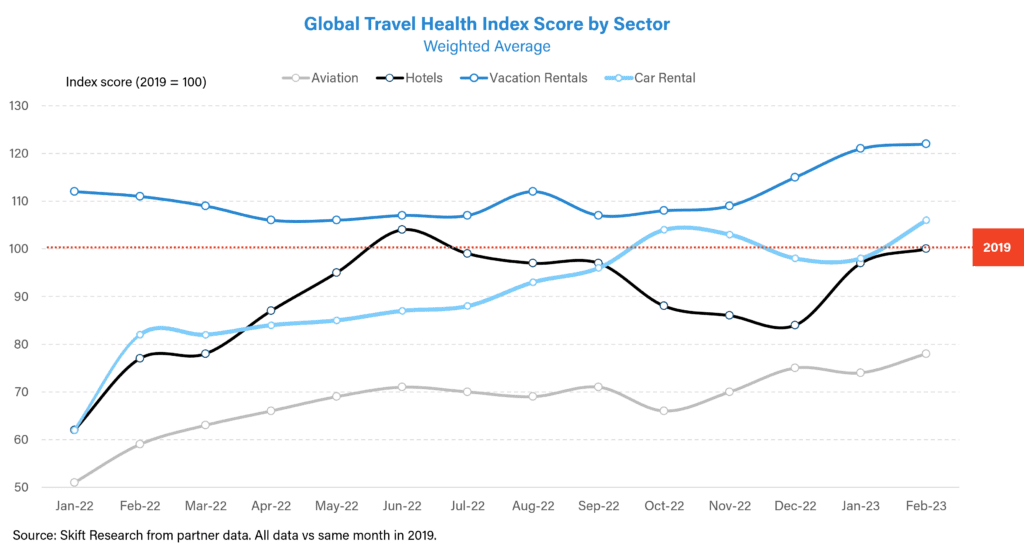
Asia Pacific Shows Exceptional Growth
While the industry has faced multiple challenges arising from the pandemic, war, and natural calamities, travel across most regions has flourished. The Asia Pacific region which had been the “black sheep” for a long time displayed speedy recovery. Travel performance in Europe was impacted by the cancellations in Turkey due to the earthquakes. As of February 2023, travel performance in the Asia Pacific region overtook Europe. This report dives deep into growing demand in Asia Pacific.
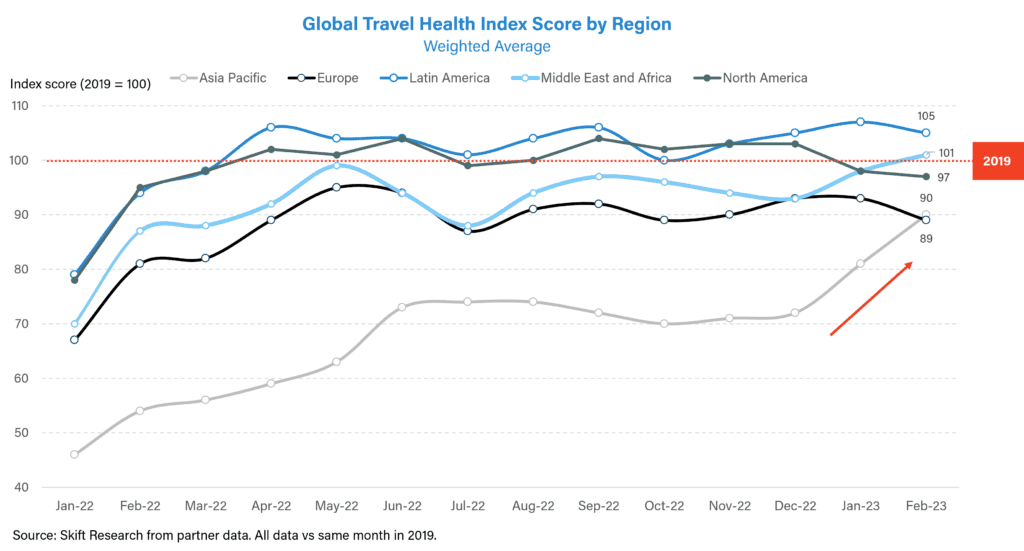
Hotels have adopted strong pricing strategy to drive recovery. The re-opening of China also boosted sales volumes for Southeast Asian countries. Group tours from China have restarted in some countries already. However, there still lies room for growth in group pricing.
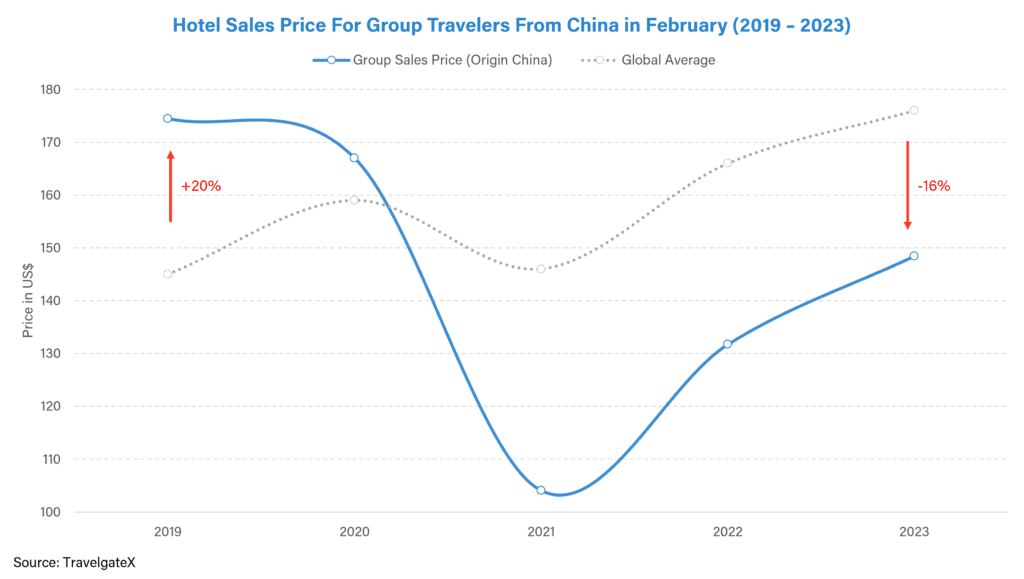
More analysis can be found in our February 2023 Highlights report and on our Skift Travel Health Index data dashboard .

Skift Travel Health Index: February 2023 Highlights
Purchase this report, or subscribe to Skift Research to read our latest analysis on the performance of the travel industry.
The Daily Newsletter
Our daily coverage of the global travel industry. Written by editors and analysts from across Skift’s brands.
Have a confidential tip for Skift? Get in touch
Tags: skift research , skift travel health index

- China Daily PDF
- China Daily E-paper
- Asia-Pacific
- Middle East
- China-Europe
- China-Japan
- China-Africa

Visa-free travel boosts Southeast Asian tourism
Industry bounces back from slump, with chinese spending habits driving growth.

An influx of Chinese travelers in the past few months has enabled Southeast Asia's tourism industry to recover from the pandemic-induced slump, analysts say.
While China has long been one of the key travel markets for members of the Association of Southeast Asian Nations, decisions made by Singapore, Malaysia and Thailand last year to waive entry requirements for Chinese tourists bolstered tourism receipts in the first two months of this year.
Visa-free access for Chinese tourists is a "facilitating factor" in boosting ASEAN tourism industry receipts, said John Paolo Rivera, associate director of the Dr Andrew L. Tan Center for Tourism at the Asian Institute of Management in the Philippines.
Chinese tourists are the biggest spenders among travelers in Southeast Asia, Rivera said.
"Alongside the volume of Chinese tourists, the Chinese spending habit has driven consumption spending and the tourism contribution to GDP" in Southeast Asia, he said, noting tourist spending has helped the ASEAN travel industry to recover from losses posted during the pandemic.
Chinese tourists' spending has perhaps created the biggest influence on Singapore.
Official figures showed international visitor arrivals in the city-state reached 13.6 million last year, with China among the top three source markets. Tourism receipts reached $15 billion in the first nine months last year, and Chinese tourists were the biggest spenders with their total receipts hitting more than $1.7 billion, the Singapore Tourism Board said.
Flight connectivity
The board expects the tourism sector's recovery to continue this year through improved global flight connectivity and the implementation of the mutual 30-day visa-free travel between China and Singapore that started on Feb 9.
Yu Hong, a senior research fellow at the East Asian Institute of the National University of Singapore, said the mutual visa-free agreement has boosted the number of Chinese visitors to Singapore, especially during Spring Festival.
Singapore has always been a popular destination among Chinese tourists because of its geographical proximity, cultural similarities and the presence of many direct flights to and from Chinese cities, Yu said.
In Malaysia, officials welcomed passengers aboard China Eastern Airlines' inaugural flight on March 16 from Kunming in Yunnan province to the Malaysian capital Kuala Lumpur.
Manoharan Periasamy, director-general of the Malaysian Tourism Promotion Board, said in a statement that this new route provides a "great opportunity" to bring in more Chinese tourists, especially after the visa-free policy took effect on Dec 1.
This year, Malaysia is eyeing 27.3 million international tourist arrivals, with 5 million expected to come from China.
Meanwhile, 3.96 million foreign tourists arrived in Thailand from Jan 1 to Feb 8, with those from China topping the list with 730,747 visitors, Thai government spokesman Chai Wacharonke was quoted in media reports as saying.
On March 1, the number of Chinese tourists to Thailand was up more than 30 percent compared with the corresponding period a year earlier, according to the online travel agency Trip.com, Xinhua News Agency reported.
Qin Jing, vice-president of Trip.com Group, said the implementation of mutual visa exemption in March holds significantly positive implications for the growth of tourism in both countries.
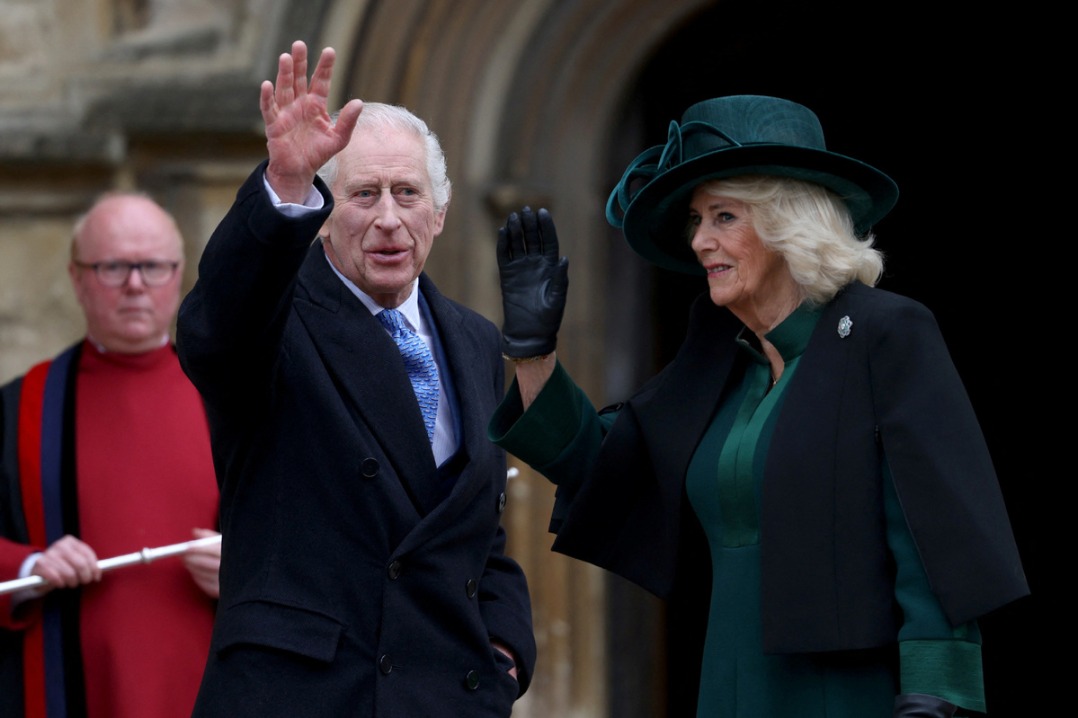
Asian refiners pin hopes on China, southeast Asia travel rebound for 2024 jet fuel demand
- Medium Text
CHINA RECOVERY
Shaky southeast, extra supplies hinge on regrade, middle east.
Sign up here.
Reporting by Trixie Yap in Singapore; Editing by Tony Munroe and Ros Russell
Our Standards: The Thomson Reuters Trust Principles. New Tab , opens new tab

Markets Chevron

Shares head for monthly loss in action-packed week
Global shares headed for their first monthly loss in six months on Tuesday ahead of a slew of economic data, earnings and the U.S. Federal Reserve's policy meeting, while the yen weakened a day after suspected intervention lifted it from 34-year lows.


Plan Your Trip
- 01 Fill in details ranging from your desired experience to the amount of people you are traveling with.
- 02 Based on your answers, discover destinations and experiences tailored to you.
- 03 Explore each suggestion
Follow the step by step with what you would like to experience for your next trip through the following 4 questions.
Quick Links
- Intra-ASEAN Tourism Toolkit Download
- Tourism Packages
- Guidelines on Self-Drive
- Facts & Planning
- Visa & Immigration
- Suggested Itineraries
- Download Video
- Download Logo
- A Destination For Every Dream
Stay updated on Covid-19 in Southeast Asia. For more information, click here .
Home About Press & Trade
ASEAN Boost for Philippine Tourism Recovery
Published on January 13, 2014
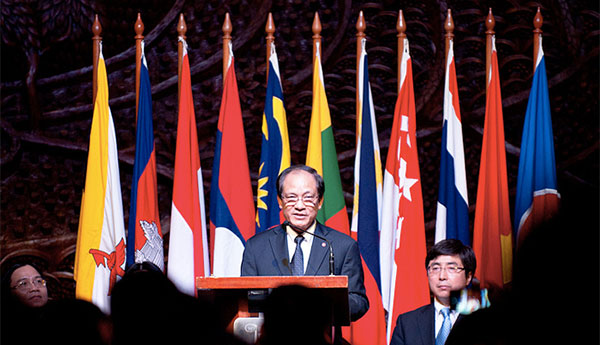
unwto tourism highlights 2022
Un tourism | bringing the world closer.
Unwto 2021: a year in review, 2021: tourism united, resilient and determined.
2021 has been a year of learning and adapting for tourism. It has proven that only by working together can the sector overcome challenges and embrace opportunities.
Gathering the global tourism community and developing concrete actions, UNWTO has led tourism’s response with the vision of not only restarting, but doing so in a more inclusive, innovative and sustainable way.

January - March
As global tourism faced up to a second year of unprecedented crisis , UNWTO began 2021 by counting the cost so far . At the same time, however, the emergence of vaccines brought hope . The Global Tourism Crisis Committee met to explore what this meant for safe travel and the restart of tourism, while the announcement of the winners of the UNWTO Global Start-up Competition recognized the role culture and creativity will play in tourism’s restart and recovery .

April - June
Collaboration and innovation were the focusat the start of the second quarter. UNWTO partnered with IATA on a new Destination Tracker to give both tourists and destinations clear, impartial and trusted advice. And a new Start-up Competition was launched to find the best ideas for accelerating rural development through tourism. In May, the launch of the Best Tourism Villages by UNWTO generated significant interest from Members in every global region.

July - September
As destinations in Europe welcomed tourists back for the peak summer season, UNWTO highlighted the role of digital solutions for the safe restart of the sector. But UNWTO also looked ahead, to a more sustainable future , working with key partners to reduce plastic waste and consumption across every part of the sector. Together, we celebrated World Tourism Day around the theme of Tourism for Inclusive Growth, a message of solidarity and determination that was echoed on a global scale.

October - December
The final quarter of 2021 began with cautious optimism as UNWTO’s Barometer showed signs of improvement in tourist arrival numbers during the summer season in the northern hemisphere. A new partnership with Netflix will bring the message of tourism as a driver of opportunity to a massive global audience, while in November, UNWTO was tourism’s voice at COP26 and signatories to the landmark Glasgow Declaration keep growing. Finally, against the backdrop of the UNWTO General Assembly , the programme of work for the coming biennium was approved and 77% of Members voted to secure a second mandate for the Secretary-General from 2022-2025.
Growing and Moving Forward
UNWTO brings together political leaders from across the globe to deliver a strong, coordinated response. Governments, destinations, fellow UN agencies and international organizations met at key international events joining efforts to rethink tourism. Institutional coordination has proven crucial to find the solutions that build a smarter, greener and safer tourism.
Leaving Nobody Behind
The pledge to ‘ leave nobody behind ’ means nobody should miss out : Not now as we support the sector in the face of crisis, and not in the future as tourism starts again. Tourism is a proven driver of equality and opportunity. And that’s why we turn words into actions, delivering guidelines and action plans , to ensure everyone can enjoy the opportunities tourism brings.
A Shared Vision
Advancing the transformation of the tourism sector , partnerships are the only way forward. In 2021, UNWTO signed agreements with international organizations and the private sector to step our vision for the future of tourism: innovation , education , sustainability , green investment , rural development.
From business as usual to Covid-19
Looking to the future
- Regional Support Office for Asia and the Pacific (RSOAP)
- Member States in Asia and the Pacific
- SUSTAINABLE TOURISM OBSERVATORIES (INSTO)

World Tourism Barometer: September 2022
UNWTO updates World Tourism Barometer and reports international tourism back to 60% of pre-pandemic levels from January to July 2022

Below are excerpts from the September 2022 release of the UNWTO Tourism Barometer :
- The steady recovery reflects strong pent-up demand for international travel, especially in the months of June and July which are part of the Northern Hemisphere summer season. The easing or lifting of travel restrictions in an increasing number of countries also contributed to boost results.
- International tourist arrivals almost tripled (+172%) in January-July 2022 compared to the same period of 2021. Numbers climbed from -64% in January 2022 (versus 2019) to -28% in July, the strongest month since the start of the pandemic.
- Asia and the Pacific (+165%) saw arrivals more than double in the first seven months of 2022, though they remained 86% below 2019 levels.
- The ongoing recovery can also be seen in outbound tourism spending from major source markets. Expenditure from France was at -12% in January-July 2022 compared to 2019 while spending from Germany stood at -14%. International tourism spending remained at -10% in Belgium, -23% in Italy and -26% in the United States.
- The uncertain economic environment seems to have reversed prospects for a return to pre-pandemic levels in the near term. 61% of UNWTO Panel of Experts now see a potential return of international arrivals to 2019 levels in 2024 or later while those indicating a return to pre-pandemic levels in 2023 has diminished (27%) compared to the May survey (48%).

Know more about the global tourism sector performance from January to July 2022 by checking the UNWTO World Tourism Barometer Volume 20, Issue 5 .
LEAVE A REPLY Cancel reply
Save my name, email, and website in this browser for the next time I comment.
Regional Support Office in Asia and the Pacific (RSOAP)
Rsoap a to z.
- Sustainable Tourism Observatories(INSTO)
UNWTO A to Z
- About UNWTO
- Affiliate Members
- Member States
- Tourism in the 2030 Agenda
- World Tourism Day
- Technical Cooperation
- ASIA AND THE PACIFIC
- MIDDLE EAST
- RESOURCES/SERVICES
- Sustainable Development of Tourism
- Ethics, Culture and Social Responsibility
- Market Intelligence
- Tourism Data Dashboard
- Publications
- UNWTO Academy
Partners links

© UNWTO Regional Support Office for Asia and the Pacific (RSOAP)
- Course Catalog

TOURISM TRENDS 2022
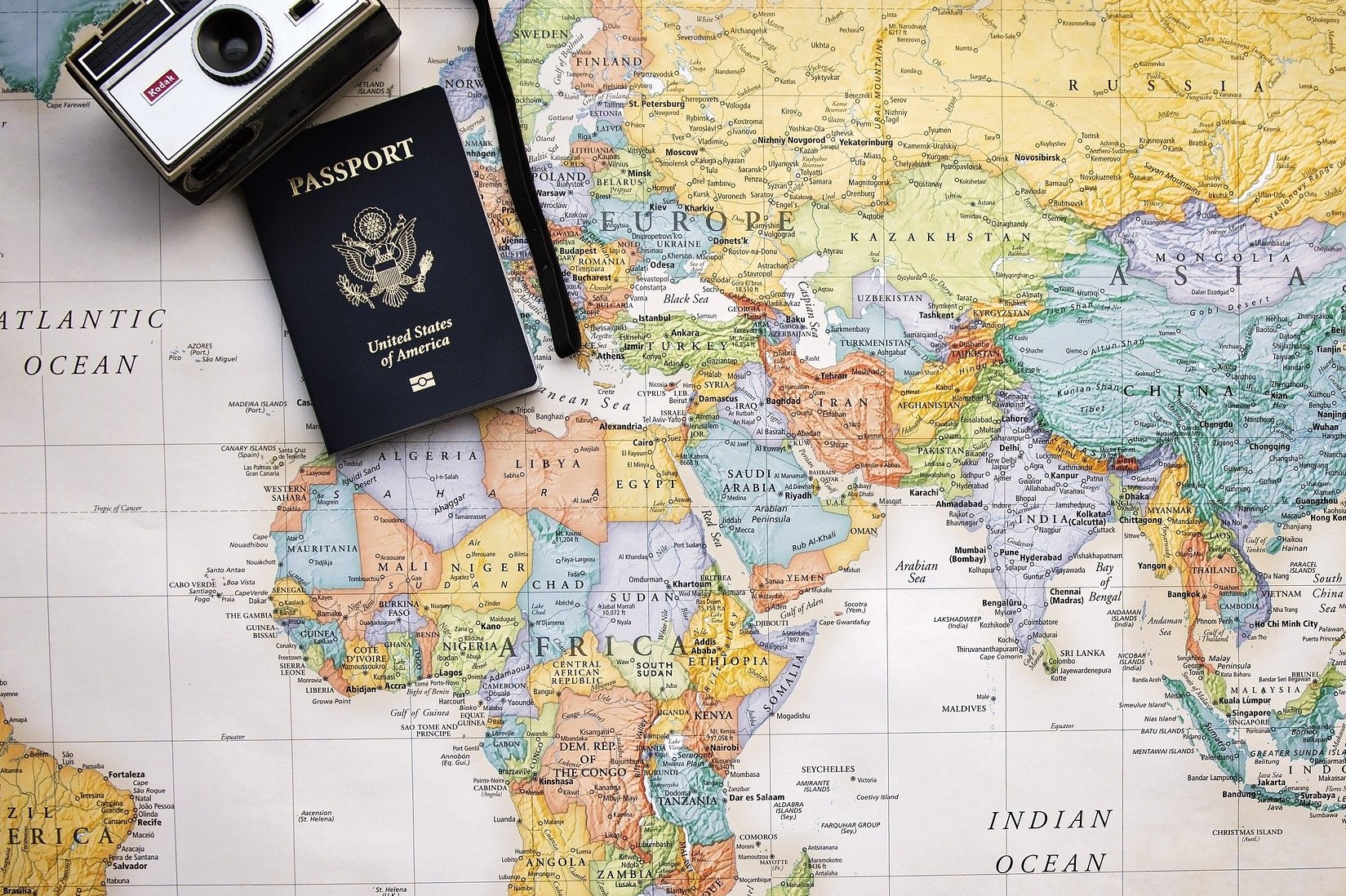
11 Aug TOURISM TRENDS 2022
The situation for tourism remains rather unusual as a result of the ongoing COVID-19 pandemic.
The crisis has marked a significant change for everyone, and above all for tourism, one of sectors hit hardest by the virus. 2020 was the year in which international tourism came to a near-complete standstill, and the only alternatives were domestic and local tourism.
2021 has seen some improvements, but only in a very subtle way as restrictions are still in place and many countries keep their borders fully or partially closed.
It is difficult to make an estimate for 2022 as it is not known how the pandemic will evolve. However, it is possible to talk about the new tourism trends that are likely to emerge over the coming year: – International travel with restrictions still maintained by both destinations and airlines in order to offer 100% security to the consumer.
– Reinforcement of COVID-19 testing; two years after the pandemic, COVID testing will still be in place as a preventive measure. – Conscious travel will be advocated. Travel to more distant destinations, but with prolonged durations of stay, as consumers look to enjoy as much of each place they visit as possible. – Green travel. Climate change is a problem that is present and growing. Consumers now are much more responsible and aware of the reality they live in on daily basis.
– A new trend is the “ed-ventures”. It is about combining education and holidays for the youngest members of the family. While adults may need to telework or attend meetings, their children can be doing workshops and learning in a playful way.
- Client log in
Metallurgicheskii Zavod Electrostal AO (Russia)
In 1993 "Elektrostal" was transformed into an open joint stock company. The factory occupies a leading position among the manufacturers of high quality steel. The plant is a producer of high-temperature nickel alloys in a wide variety. It has a unique set of metallurgical equipment: open induction and arc furnaces, furnace steel processing unit, vacuum induction, vacuum- arc furnaces and others. The factory has implemented and certified quality management system ISO 9000, received international certificates for all products. Elektrostal today is a major supplier in Russia starting blanks for the production of blades, discs and rolls for gas turbine engines. Among them are companies in the aerospace industry, defense plants, and energy complex, automotive, mechanical engineering and instrument-making plants.
Headquarters Ulitsa Zheleznodorozhnaya, 1 Elektrostal; Moscow Oblast; Postal Code: 144002
Contact Details: Purchase the Metallurgicheskii Zavod Electrostal AO report to view the information.
Website: http://elsteel.ru
EMIS company profiles are part of a larger information service which combines company, industry and country data and analysis for over 145 emerging markets.
To view more information, Request a demonstration of the EMIS service

Turn Your Curiosity Into Discovery
Latest facts.
11 Facts About National Numeracy Day May 22nd
9 Facts About Workers Memorial Day April 28th
40 facts about elektrostal.
Written by Lanette Mayes
Modified & Updated: 02 Mar 2024
Reviewed by Jessica Corbett

Elektrostal is a vibrant city located in the Moscow Oblast region of Russia. With a rich history, stunning architecture, and a thriving community, Elektrostal is a city that has much to offer. Whether you are a history buff, nature enthusiast, or simply curious about different cultures, Elektrostal is sure to captivate you.
This article will provide you with 40 fascinating facts about Elektrostal, giving you a better understanding of why this city is worth exploring. From its origins as an industrial hub to its modern-day charm, we will delve into the various aspects that make Elektrostal a unique and must-visit destination.
So, join us as we uncover the hidden treasures of Elektrostal and discover what makes this city a true gem in the heart of Russia.
Key Takeaways:
- Elektrostal, known as the “Motor City of Russia,” is a vibrant and growing city with a rich industrial history, offering diverse cultural experiences and a strong commitment to environmental sustainability.
- With its convenient location near Moscow, Elektrostal provides a picturesque landscape, vibrant nightlife, and a range of recreational activities, making it an ideal destination for residents and visitors alike.
Known as the “Motor City of Russia.”
Elektrostal, a city located in the Moscow Oblast region of Russia, earned the nickname “Motor City” due to its significant involvement in the automotive industry.
Home to the Elektrostal Metallurgical Plant.
Elektrostal is renowned for its metallurgical plant, which has been producing high-quality steel and alloys since its establishment in 1916.
Boasts a rich industrial heritage.
Elektrostal has a long history of industrial development, contributing to the growth and progress of the region.
Founded in 1916.
The city of Elektrostal was founded in 1916 as a result of the construction of the Elektrostal Metallurgical Plant.
Located approximately 50 kilometers east of Moscow.
Elektrostal is situated in close proximity to the Russian capital, making it easily accessible for both residents and visitors.
Known for its vibrant cultural scene.
Elektrostal is home to several cultural institutions, including museums, theaters, and art galleries that showcase the city’s rich artistic heritage.
A popular destination for nature lovers.
Surrounded by picturesque landscapes and forests, Elektrostal offers ample opportunities for outdoor activities such as hiking, camping, and birdwatching.
Hosts the annual Elektrostal City Day celebrations.
Every year, Elektrostal organizes festive events and activities to celebrate its founding, bringing together residents and visitors in a spirit of unity and joy.
Has a population of approximately 160,000 people.
Elektrostal is home to a diverse and vibrant community of around 160,000 residents, contributing to its dynamic atmosphere.
Boasts excellent education facilities.
The city is known for its well-established educational institutions, providing quality education to students of all ages.
A center for scientific research and innovation.
Elektrostal serves as an important hub for scientific research, particularly in the fields of metallurgy, materials science, and engineering.

Surrounded by picturesque lakes.
The city is blessed with numerous beautiful lakes, offering scenic views and recreational opportunities for locals and visitors alike.
Well-connected transportation system.
Elektrostal benefits from an efficient transportation network, including highways, railways, and public transportation options, ensuring convenient travel within and beyond the city.
Famous for its traditional Russian cuisine.
Food enthusiasts can indulge in authentic Russian dishes at numerous restaurants and cafes scattered throughout Elektrostal.
Home to notable architectural landmarks.
Elektrostal boasts impressive architecture, including the Church of the Transfiguration of the Lord and the Elektrostal Palace of Culture.
Offers a wide range of recreational facilities.
Residents and visitors can enjoy various recreational activities, such as sports complexes, swimming pools, and fitness centers, enhancing the overall quality of life.
Provides a high standard of healthcare.
Elektrostal is equipped with modern medical facilities, ensuring residents have access to quality healthcare services.
Home to the Elektrostal History Museum.
The Elektrostal History Museum showcases the city’s fascinating past through exhibitions and displays.
A hub for sports enthusiasts.
Elektrostal is passionate about sports, with numerous stadiums, arenas, and sports clubs offering opportunities for athletes and spectators.
Celebrates diverse cultural festivals.
Throughout the year, Elektrostal hosts a variety of cultural festivals, celebrating different ethnicities, traditions, and art forms.
Electric power played a significant role in its early development.
Elektrostal owes its name and initial growth to the establishment of electric power stations and the utilization of electricity in the industrial sector.
Boasts a thriving economy.
The city’s strong industrial base, coupled with its strategic location near Moscow, has contributed to Elektrostal’s prosperous economic status.
Houses the Elektrostal Drama Theater.
The Elektrostal Drama Theater is a cultural centerpiece, attracting theater enthusiasts from far and wide.
Popular destination for winter sports.
Elektrostal’s proximity to ski resorts and winter sport facilities makes it a favorite destination for skiing, snowboarding, and other winter activities.
Promotes environmental sustainability.
Elektrostal prioritizes environmental protection and sustainability, implementing initiatives to reduce pollution and preserve natural resources.
Home to renowned educational institutions.
Elektrostal is known for its prestigious schools and universities, offering a wide range of academic programs to students.
Committed to cultural preservation.
The city values its cultural heritage and takes active steps to preserve and promote traditional customs, crafts, and arts.
Hosts an annual International Film Festival.
The Elektrostal International Film Festival attracts filmmakers and cinema enthusiasts from around the world, showcasing a diverse range of films.
Encourages entrepreneurship and innovation.
Elektrostal supports aspiring entrepreneurs and fosters a culture of innovation, providing opportunities for startups and business development.
Offers a range of housing options.
Elektrostal provides diverse housing options, including apartments, houses, and residential complexes, catering to different lifestyles and budgets.
Home to notable sports teams.
Elektrostal is proud of its sports legacy, with several successful sports teams competing at regional and national levels.
Boasts a vibrant nightlife scene.
Residents and visitors can enjoy a lively nightlife in Elektrostal, with numerous bars, clubs, and entertainment venues.
Promotes cultural exchange and international relations.
Elektrostal actively engages in international partnerships, cultural exchanges, and diplomatic collaborations to foster global connections.
Surrounded by beautiful nature reserves.
Nearby nature reserves, such as the Barybino Forest and Luchinskoye Lake, offer opportunities for nature enthusiasts to explore and appreciate the region’s biodiversity.
Commemorates historical events.
The city pays tribute to significant historical events through memorials, monuments, and exhibitions, ensuring the preservation of collective memory.
Promotes sports and youth development.
Elektrostal invests in sports infrastructure and programs to encourage youth participation, health, and physical fitness.
Hosts annual cultural and artistic festivals.
Throughout the year, Elektrostal celebrates its cultural diversity through festivals dedicated to music, dance, art, and theater.
Provides a picturesque landscape for photography enthusiasts.
The city’s scenic beauty, architectural landmarks, and natural surroundings make it a paradise for photographers.
Connects to Moscow via a direct train line.
The convenient train connection between Elektrostal and Moscow makes commuting between the two cities effortless.
A city with a bright future.
Elektrostal continues to grow and develop, aiming to become a model city in terms of infrastructure, sustainability, and quality of life for its residents.
In conclusion, Elektrostal is a fascinating city with a rich history and a vibrant present. From its origins as a center of steel production to its modern-day status as a hub for education and industry, Elektrostal has plenty to offer both residents and visitors. With its beautiful parks, cultural attractions, and proximity to Moscow, there is no shortage of things to see and do in this dynamic city. Whether you’re interested in exploring its historical landmarks, enjoying outdoor activities, or immersing yourself in the local culture, Elektrostal has something for everyone. So, next time you find yourself in the Moscow region, don’t miss the opportunity to discover the hidden gems of Elektrostal.
Q: What is the population of Elektrostal?
A: As of the latest data, the population of Elektrostal is approximately XXXX.
Q: How far is Elektrostal from Moscow?
A: Elektrostal is located approximately XX kilometers away from Moscow.
Q: Are there any famous landmarks in Elektrostal?
A: Yes, Elektrostal is home to several notable landmarks, including XXXX and XXXX.
Q: What industries are prominent in Elektrostal?
A: Elektrostal is known for its steel production industry and is also a center for engineering and manufacturing.
Q: Are there any universities or educational institutions in Elektrostal?
A: Yes, Elektrostal is home to XXXX University and several other educational institutions.
Q: What are some popular outdoor activities in Elektrostal?
A: Elektrostal offers several outdoor activities, such as hiking, cycling, and picnicking in its beautiful parks.
Q: Is Elektrostal well-connected in terms of transportation?
A: Yes, Elektrostal has good transportation links, including trains and buses, making it easily accessible from nearby cities.
Q: Are there any annual events or festivals in Elektrostal?
A: Yes, Elektrostal hosts various events and festivals throughout the year, including XXXX and XXXX.
Was this page helpful?
Our commitment to delivering trustworthy and engaging content is at the heart of what we do. Each fact on our site is contributed by real users like you, bringing a wealth of diverse insights and information. To ensure the highest standards of accuracy and reliability, our dedicated editors meticulously review each submission. This process guarantees that the facts we share are not only fascinating but also credible. Trust in our commitment to quality and authenticity as you explore and learn with us.
Share this Fact:

- Victor Mukhin

Victor M. Mukhin was born in 1946 in the town of Orsk, Russia. In 1970 he graduated the Technological Institute in Leningrad. Victor M. Mukhin was directed to work to the scientific-industrial organization "Neorganika" (Elektrostal, Moscow region) where he is working during 47 years, at present as the head of the laboratory of carbon sorbents. Victor M. Mukhin defended a Ph. D. thesis and a doctoral thesis at the Mendeleev University of Chemical Technology of Russia (in 1979 and 1997 accordingly). Professor of Mendeleev University of Chemical Technology of Russia. Scientific interests: production, investigation and application of active carbons, technological and ecological carbon-adsorptive processes, environmental protection, production of ecologically clean food.
Title : Active carbons as nanoporous materials for solving of environmental problems
Quick links.
- Conference Brochure
- Tentative Program

2022 has been the year to rethink tourism. Countries around the world turned UNWTO's vision for a greener, smarter and more inclusive sector into real action. 2020 showed the relevance of tourism for sustainable development. 2021 laid the foundations for the transformation of the sector. In 2022, we made it happen. 2022 began on a positive note.
According to the latest UNWTO World Tourism Barometer, international tourism saw a strong rebound in the first five months of 2022, with almost 250 million international arrivals recorded. This compares to 77 million arrivals from January to May 2021 and means that the sector has recovered almost half (46%) of pre-pandemic 2019 levels. UN ...
International Tourism Highlights, 2023 Edition - The Impact of COVID-19 on Tourism (2020-2022) ISBN (printed version): 978-92-844-2497-9 ISBN (electronic version): 978-92-844-2498-6 DOI: 10.18111/9789284424986 Published by the World Tourism Organization (UNWTO), Madrid, Spain First published: September 2023 Revised and updated: October 2023
Find out the latest updates from the UNWTO on tourism trends, challenges and opportunities in 2022 and beyond. Learn about the UNWTO's activities, projects and partnerships in various regions and topics, such as sustainable tourism, gastronomy, investment and education.
International Tourism and COVID-19. Export revenues from international tourism dropped 62% in 2020 and 59% in 2021, versus 2019 (real terms) and then rebounded in 2022, remaining 34% below pre-pandemic levels. The total loss in export revenues from tourism amounts to USD 2.6 trillion for that three-year period. Go to Dashboard.
According to the latest UNWTO World Tourism Barometer, international tourist arrivals almost tripled in January to July 2022 (+172%) compared to the same period of 2021. This means t he sector recovered almost 60% of pre-pandemic levels. The steady recovery reflects strong pent-up demand for international travel as well as the easing or lifting ...
The time is now to seize this opportunity to rethink how we do tourism. The official World Tourism Day celebration will be held in Bali, Indonesia, on 27 September, highlighting the shift towards tourism being recognized as a crucial pillar of development. Wonderful Indonesia - Witness the 42nd World Tourism Day 2022 in Bali, Indonesia!
In terms of tourist numbers, the year 2022 is expected to close with over 900 million international arrivals, despite growing challenges pointing to a softening of the recovery pace. International tourist arrivals: 2020, 2021 and Scenarios for 2022 (monthly change over 2019,%) Source UNWTO World Tourism Barometer: November 2022 Press Release.
January - March. As global tourism faced up to a second year of unprecedented crisis, UNWTO began 2021 by counting the cost so far.At the same time, however, the emergence of vaccines brought hope.The Global Tourism Crisis Committee met to explore what this meant for safe travel and the restart of tourism, while the announcement of the winners of the UNWTO Global Start-up Competition ...
Below are excerpts from the latest World Tourism Barometer May 2022 issue: According to the latest UNWTO World Tourism Barometer, international tourism saw a 182% year-on-year increase in January-March 2022, with destinations worldwide welcoming an estimated 117 million international arrivals compared to 41 million in Q1 2021.
The UNWTO Elibrary is an online service from the World Tourism Organization (UNWTO) with a broad coverage of tourism and related subject areas. ... International Tourism Highlights, 2023 Edition - The Impact of COVID-19 on Tourism (2020-2022) Revised and updated, October 2023. Released: December 2023.
The 7th UNWTO World Forum on Gastronomy Tourism will be held from Monday, December 12 to Thursday, December 15, 2022 (4 days).
The economic contribution of tourism (tourism direct gross domestic product) is estimated at US$1.9 trillion in 2021, above the US$1.6 trillion in 2020, but still well below the pre-pandemic value of US$ 3.5 trillion. The latest UNWTO Panel of Experts survey indicates that 61% of tourism professionals expect better performance in 2022 than in 2021.
Below are relevant points to the July 2022 World Tourism Barometer: Nearly 250 million international trips were recorded worldwide in the first five months of the year, more than three times the number of arrivals recorded in the same period of 2021 (77 million). Robust performance is also reflected in hotel occupancy rates.
2022-10-28. Below are excerpts from the September 2022 release of the UNWTO Tourism Barometer: The steady recovery reflects strong pent-up demand for international travel, especially in the months of June and July which are part of the Northern Hemisphere summer season. The easing or lifting of travel restrictions in an increasing number of ...
International tourism continues to outpace the global economy. 2. Driven by a relatively strong global economy, a growing middle class in emerging economies, technological advances, new business models, affordable travel costs and visa facilitation, international tourist arrivals grew 5% in 2018 to reach the 1.4 billion mark.
UNWTO Tourism Academy | TOURISM TRENDS 2022. The situation for tourism remains rather unusual as a result of the ongoing COVID-19 pandemic. The crisis has marked a significant change for everyone, and above all for tourism, one of sectors hit hardest by the virus. 2020 was the year in which international tourism came to a near-complete ...
International Tourism Highlights, 2023 Edition - The Impact of COVID-19 on Tourism (2020-2022) Revised and updated, October 2023 Published: December 2023 Pages: 32
International Tourism Highlights, 2020 Edition. Published: January 2021 Pages: 23. eISBN: 978-92-844-2245-6 | ISBN: 978-92-844-2244-9. Abstract: 2019 was another year of strong growth, though international arrivals grew below the exceptional rates seen in 2017 (+7%) and 2018 (+6%). Demand was somewhat weaker for travel to advanced economy ...
Main Activities: Iron and Steel Mills and Ferroalloy Manufacturing | Nonferrous Metal (except Copper and Aluminum) Rolling, Drawing, and Extruding. Full name: Metallurgicheskii Zavod Electrostal AO Profile Updated: February 22, 2024. Buy our report for this company USD 29.95 Most recent financial data: 2022 Available in: English & Russian ...
40 Facts About Elektrostal. Elektrostal is a vibrant city located in the Moscow Oblast region of Russia. With a rich history, stunning architecture, and a thriving community, Elektrostal is a city that has much to offer. Whether you are a history buff, nature enthusiast, or simply curious about different cultures, Elektrostal is sure to ...
Catalysis Conference is a networking event covering all topics in catalysis, chemistry, chemical engineering and technology during October 19-21, 2017 in Las Vegas, USA. Well noted as well attended meeting among all other annual catalysis conferences 2018, chemical engineering conferences 2018 and chemistry webinars.
In the city of Elektrostal in Russia, a drone attack occurred. It's reported that no one was injured as a result of the incident. Additional details, including the particulars of the attack, potential motives or responsible parties, have not been provided. However, the fact that a drone was used as a means of attack underscores

40 Facts About Elektrostal
Written by Lanette Mayes
Modified & Updated: 02 Mar 2024
Reviewed by Jessica Corbett

Elektrostal is a vibrant city located in the Moscow Oblast region of Russia. With a rich history, stunning architecture, and a thriving community, Elektrostal is a city that has much to offer. Whether you are a history buff, nature enthusiast, or simply curious about different cultures, Elektrostal is sure to captivate you.
This article will provide you with 40 fascinating facts about Elektrostal, giving you a better understanding of why this city is worth exploring. From its origins as an industrial hub to its modern-day charm, we will delve into the various aspects that make Elektrostal a unique and must-visit destination.
So, join us as we uncover the hidden treasures of Elektrostal and discover what makes this city a true gem in the heart of Russia.
Key Takeaways:
- Elektrostal, known as the “Motor City of Russia,” is a vibrant and growing city with a rich industrial history, offering diverse cultural experiences and a strong commitment to environmental sustainability.
- With its convenient location near Moscow, Elektrostal provides a picturesque landscape, vibrant nightlife, and a range of recreational activities, making it an ideal destination for residents and visitors alike.
Known as the “Motor City of Russia.”
Elektrostal, a city located in the Moscow Oblast region of Russia, earned the nickname “Motor City” due to its significant involvement in the automotive industry.
Home to the Elektrostal Metallurgical Plant.
Elektrostal is renowned for its metallurgical plant, which has been producing high-quality steel and alloys since its establishment in 1916.
Boasts a rich industrial heritage.
Elektrostal has a long history of industrial development, contributing to the growth and progress of the region.
Founded in 1916.
The city of Elektrostal was founded in 1916 as a result of the construction of the Elektrostal Metallurgical Plant.
Located approximately 50 kilometers east of Moscow.
Elektrostal is situated in close proximity to the Russian capital, making it easily accessible for both residents and visitors.
Known for its vibrant cultural scene.
Elektrostal is home to several cultural institutions, including museums, theaters, and art galleries that showcase the city’s rich artistic heritage.
A popular destination for nature lovers.
Surrounded by picturesque landscapes and forests, Elektrostal offers ample opportunities for outdoor activities such as hiking, camping, and birdwatching.
Hosts the annual Elektrostal City Day celebrations.
Every year, Elektrostal organizes festive events and activities to celebrate its founding, bringing together residents and visitors in a spirit of unity and joy.
Has a population of approximately 160,000 people.
Elektrostal is home to a diverse and vibrant community of around 160,000 residents, contributing to its dynamic atmosphere.
Boasts excellent education facilities.
The city is known for its well-established educational institutions, providing quality education to students of all ages.
A center for scientific research and innovation.
Elektrostal serves as an important hub for scientific research, particularly in the fields of metallurgy, materials science, and engineering.
Surrounded by picturesque lakes.
The city is blessed with numerous beautiful lakes, offering scenic views and recreational opportunities for locals and visitors alike.
Well-connected transportation system.
Elektrostal benefits from an efficient transportation network, including highways, railways, and public transportation options, ensuring convenient travel within and beyond the city.
Famous for its traditional Russian cuisine.
Food enthusiasts can indulge in authentic Russian dishes at numerous restaurants and cafes scattered throughout Elektrostal.
Home to notable architectural landmarks.
Elektrostal boasts impressive architecture, including the Church of the Transfiguration of the Lord and the Elektrostal Palace of Culture.
Offers a wide range of recreational facilities.
Residents and visitors can enjoy various recreational activities, such as sports complexes, swimming pools, and fitness centers, enhancing the overall quality of life.
Provides a high standard of healthcare.
Elektrostal is equipped with modern medical facilities, ensuring residents have access to quality healthcare services.
Home to the Elektrostal History Museum.
The Elektrostal History Museum showcases the city’s fascinating past through exhibitions and displays.
A hub for sports enthusiasts.
Elektrostal is passionate about sports, with numerous stadiums, arenas, and sports clubs offering opportunities for athletes and spectators.
Celebrates diverse cultural festivals.
Throughout the year, Elektrostal hosts a variety of cultural festivals, celebrating different ethnicities, traditions, and art forms.
Electric power played a significant role in its early development.
Elektrostal owes its name and initial growth to the establishment of electric power stations and the utilization of electricity in the industrial sector.
Boasts a thriving economy.
The city’s strong industrial base, coupled with its strategic location near Moscow, has contributed to Elektrostal’s prosperous economic status.
Houses the Elektrostal Drama Theater.
The Elektrostal Drama Theater is a cultural centerpiece, attracting theater enthusiasts from far and wide.
Popular destination for winter sports.
Elektrostal’s proximity to ski resorts and winter sport facilities makes it a favorite destination for skiing, snowboarding, and other winter activities.
Promotes environmental sustainability.
Elektrostal prioritizes environmental protection and sustainability, implementing initiatives to reduce pollution and preserve natural resources.
Home to renowned educational institutions.
Elektrostal is known for its prestigious schools and universities, offering a wide range of academic programs to students.
Committed to cultural preservation.
The city values its cultural heritage and takes active steps to preserve and promote traditional customs, crafts, and arts.
Hosts an annual International Film Festival.
The Elektrostal International Film Festival attracts filmmakers and cinema enthusiasts from around the world, showcasing a diverse range of films.
Encourages entrepreneurship and innovation.
Elektrostal supports aspiring entrepreneurs and fosters a culture of innovation, providing opportunities for startups and business development.
Offers a range of housing options.
Elektrostal provides diverse housing options, including apartments, houses, and residential complexes, catering to different lifestyles and budgets.
Home to notable sports teams.
Elektrostal is proud of its sports legacy, with several successful sports teams competing at regional and national levels.
Boasts a vibrant nightlife scene.
Residents and visitors can enjoy a lively nightlife in Elektrostal, with numerous bars, clubs, and entertainment venues.
Promotes cultural exchange and international relations.
Elektrostal actively engages in international partnerships, cultural exchanges, and diplomatic collaborations to foster global connections.
Surrounded by beautiful nature reserves.
Nearby nature reserves, such as the Barybino Forest and Luchinskoye Lake, offer opportunities for nature enthusiasts to explore and appreciate the region’s biodiversity.
Commemorates historical events.
The city pays tribute to significant historical events through memorials, monuments, and exhibitions, ensuring the preservation of collective memory.
Promotes sports and youth development.
Elektrostal invests in sports infrastructure and programs to encourage youth participation, health, and physical fitness.
Hosts annual cultural and artistic festivals.
Throughout the year, Elektrostal celebrates its cultural diversity through festivals dedicated to music, dance, art, and theater.
Provides a picturesque landscape for photography enthusiasts.
The city’s scenic beauty, architectural landmarks, and natural surroundings make it a paradise for photographers.
Connects to Moscow via a direct train line.
The convenient train connection between Elektrostal and Moscow makes commuting between the two cities effortless.
A city with a bright future.
Elektrostal continues to grow and develop, aiming to become a model city in terms of infrastructure, sustainability, and quality of life for its residents.
In conclusion, Elektrostal is a fascinating city with a rich history and a vibrant present. From its origins as a center of steel production to its modern-day status as a hub for education and industry, Elektrostal has plenty to offer both residents and visitors. With its beautiful parks, cultural attractions, and proximity to Moscow, there is no shortage of things to see and do in this dynamic city. Whether you’re interested in exploring its historical landmarks, enjoying outdoor activities, or immersing yourself in the local culture, Elektrostal has something for everyone. So, next time you find yourself in the Moscow region, don’t miss the opportunity to discover the hidden gems of Elektrostal.
Q: What is the population of Elektrostal?
A: As of the latest data, the population of Elektrostal is approximately XXXX.
Q: How far is Elektrostal from Moscow?
A: Elektrostal is located approximately XX kilometers away from Moscow.
Q: Are there any famous landmarks in Elektrostal?
A: Yes, Elektrostal is home to several notable landmarks, including XXXX and XXXX.
Q: What industries are prominent in Elektrostal?
A: Elektrostal is known for its steel production industry and is also a center for engineering and manufacturing.
Q: Are there any universities or educational institutions in Elektrostal?
A: Yes, Elektrostal is home to XXXX University and several other educational institutions.
Q: What are some popular outdoor activities in Elektrostal?
A: Elektrostal offers several outdoor activities, such as hiking, cycling, and picnicking in its beautiful parks.
Q: Is Elektrostal well-connected in terms of transportation?
A: Yes, Elektrostal has good transportation links, including trains and buses, making it easily accessible from nearby cities.
Q: Are there any annual events or festivals in Elektrostal?
A: Yes, Elektrostal hosts various events and festivals throughout the year, including XXXX and XXXX.
Was this page helpful?
Our commitment to delivering trustworthy and engaging content is at the heart of what we do. Each fact on our site is contributed by real users like you, bringing a wealth of diverse insights and information. To ensure the highest standards of accuracy and reliability, our dedicated editors meticulously review each submission. This process guarantees that the facts we share are not only fascinating but also credible. Trust in our commitment to quality and authenticity as you explore and learn with us.
Share this Fact:
Claudia Looi
Touring the Top 10 Moscow Metro Stations
By Claudia Looi 2 Comments

Komsomolskaya metro station looks like a museum. It has vaulted ceilings and baroque decor.
Hidden underground, in the heart of Moscow, are historical and architectural treasures of Russia. These are Soviet-era creations – the metro stations of Moscow.
Our guide Maria introduced these elaborate metro stations as “the palaces for the people.” Built between 1937 and 1955, each station holds its own history and stories. Stalin had the idea of building beautiful underground spaces that the masses could enjoy. They would look like museums, art centers, concert halls, palaces and churches. Each would have a different theme. None would be alike.
The two-hour private tour was with a former Intourist tour guide named Maria. Maria lived in Moscow all her life and through the communist era of 60s to 90s. She has been a tour guide for more than 30 years. Being in her 60s, she moved rather quickly for her age. We traveled and crammed with Maria and other Muscovites on the metro to visit 10 different metro stations.

Arrow showing the direction of metro line 1 and 2

Moscow subways are very clean
To Maria, every street, metro and building told a story. I couldn’t keep up with her stories. I don’t remember most of what she said because I was just thrilled being in Moscow. Added to that, she spilled out so many Russian words and names, which to one who can’t read Cyrillic, sounded so foreign and could be easily forgotten.
The metro tour was the first part of our all day tour of Moscow with Maria. Here are the stations we visited:
1. Komsomolskaya Metro Station is the most beautiful of them all. Painted yellow and decorated with chandeliers, gold leaves and semi precious stones, the station looks like a stately museum. And possibly decorated like a palace. I saw Komsomolskaya first, before the rest of the stations upon arrival in Moscow by train from St. Petersburg.
2. Revolution Square Metro Station (Ploshchad Revolyutsii) has marble arches and 72 bronze sculptures designed by Alexey Dushkin. The marble arches are flanked by the bronze sculptures. If you look closely you will see passersby touching the bronze dog's nose. Legend has it that good luck comes to those who touch the dog's nose.

Touch the dog's nose for good luck. At the Revolution Square station

Revolution Square Metro Station
3. Arbatskaya Metro Station served as a shelter during the Soviet-era. It is one of the largest and the deepest metro stations in Moscow.

Arbatskaya Metro Station
4. Biblioteka Imeni Lenina Metro Station was built in 1935 and named after the Russian State Library. It is located near the library and has a big mosaic portrait of Lenin and yellow ceramic tiles on the track walls.

Lenin's portrait at the Biblioteka Imeni Lenina Metro Station

5. Kievskaya Metro Station was one of the first to be completed in Moscow. Named after the capital city of Ukraine by Kiev-born, Nikita Khruschev, Stalin's successor.

Kievskaya Metro Station
6. Novoslobodskaya Metro Station was built in 1952. It has 32 stained glass murals with brass borders.

Novoslobodskaya metro station
7. Kurskaya Metro Station was one of the first few to be built in Moscow in 1938. It has ceiling panels and artwork showing Soviet leadership, Soviet lifestyle and political power. It has a dome with patriotic slogans decorated with red stars representing the Soviet's World War II Hall of Fame. Kurskaya Metro Station is a must-visit station in Moscow.

Ceiling panel and artworks at Kurskaya Metro Station

8. Mayakovskaya Metro Station built in 1938. It was named after Russian poet Vladmir Mayakovsky. This is one of the most beautiful metro stations in the world with 34 mosaics painted by Alexander Deyneka.

Mayakovskaya station

One of the over 30 ceiling mosaics in Mayakovskaya metro station
9. Belorusskaya Metro Station is named after the people of Belarus. In the picture below, there are statues of 3 members of the Partisan Resistance in Belarus during World War II. The statues were sculpted by Sergei Orlov, S. Rabinovich and I. Slonim.

10. Teatralnaya Metro Station (Theatre Metro Station) is located near the Bolshoi Theatre.

Teatralnaya Metro Station decorated with porcelain figures .

Taking the metro's escalator at the end of the tour with Maria the tour guide.
Have you visited the Moscow Metro? Leave your comment below.
January 15, 2017 at 8:17 am
An excellent read! Thanks for much for sharing the Russian metro system with us. We're heading to Moscow in April and exploring the metro stations were on our list and after reading your post, I'm even more excited to go visit them. Thanks again 🙂
December 6, 2017 at 10:45 pm
Hi, do you remember which tour company you contacted for this tour?
Leave a Reply Cancel reply
You must be logged in to post a comment.
Please go to the Instagram Feed settings page to create a feed.

IMAGES
COMMENTS
In 2019, Southeast Asia's tourism market was booming. The six largest economies in the region (Indonesia, Thailand, Singapore, Malaysia, Vietnam, and the Philippines) combined for over 127 ...
Southeast Asia's travel recovery faces other global headwinds too: rising costs and interest rates, inflation and a potential recession. Jet fuel prices in early June were up 128% from a year ...
Increasing travel activity in 2023 from Asia Pacific countries is helping. In 2019, China was the top visitor market for the 10 countries of South East Asia, contributing 22.5 percent of all visitors. South Korea ranked 4 th, Japan 7 th, Australia 11 th, Taiwan 15 th and Hong Kong 23 rd. Four of South East Asia's top 10 visitor markets were ...
Being one of the last few regions to reopen its borders, Southeast Asia has been lagging behind in travel recovery. Between January and May travel to Southeast Asia was just at 18 percent of pre ...
The Southeast Asian nation is hoping to notch a million international visitors this year—a ... Asian tourism's uneven recovery. ... Asia-Pacific travel is "a sleeping dragon that is waking ...
Latest Travel Industry News and Analysis to Inform Your Decisions. Pear Anderson has been tracking the travel industry impact of COVID-19 and its subsequent recovery in Southeast Asia. Easy-to-read summary to stay updated of the status of each country. Use this information to stay informed of the opportunities, and know when the right time is ...
Asia and the Pacific lags in tourism recovery compared to Europe and the Americas because of its cautious stance on reopening borders and more restrictive travel policies. The flow of tourists into the region was only about 10.3% of the pre-pandemic figure of 343 million in 2019, despite bullish year-on-year growth during the first 8 months of ...
Southeast Asian travelers are back. Before COVID-19, the countries of Southeast Asia were some of the world's most popular travel destinations. The pandemic changed that in a matter of months — with devastating repercussions for the region's $380 billion tourism industry. In early 2022, though, the tide started to turn again.
Policy Options to Accelerate Travel and Tourism Recovery in Southeast Asia. The COVID-19 crisis has reduced or suspended operations of travel and tourism businesses, both big and small—from airlines and hotel chains to tour operators and tourist guides. Photo credit: ADB. Adopt a risk-based and phased approach toward recovery and enhance ...
The medium scenario also pitches the strongest recovery for South Asia in 2022 with international visitor arrivals at 38 percent of 2019. Southeast Asia is predicted to reach 67 percent of 2019 ...
Asia-Pacific's travel industry could fully recover by 2023, WTTC says. The report estimates the average annual growth rate of the global economy will be 2.7% from 2022 to 2032. Yet, during the ...
Travel and tourism in Southeast Asia - known for its white sand beaches, historical architecture and warm climate - contributed $380.6 billion to the region's GDP in 2019, or 11.8% of the total ...
The Asia Pacific region, aided by the reopening of China and the Lunar New Year is on the path to rapid recovery. While China gets ready to travel again, the global tourism industry needs to catch ...
Visitors check travel deals at a travel and tourism fair in Bangkok on June 29. ... An additional challenge is that the recovery in Southeast Asia's hotel industry has hinged on the strength of ...
Southeast Asia's international seat capacity - a proxy for demand - trailed most regions and was down 22.3 per cent below the week commencing May 2 compared to the same week in 2019 ...
An influx of Chinese travelers in the past few months has enabled Southeast Asia's tourism industry to recover from the pandemic-induced slump, analysts say.
Asian refiners are pinning their 2024 jet fuel demand hopes on continued air travel recovery from China and southeast Asia, with supply movements to be driven by output from a spate of new Middle ...
Prepare for the Ultimate Adventure: The Southeast Asia Challenge ... especially its tourism recovery efforts, since typhoon Haiyan (Yolanda) struck on 8 November. ... "It is an invitation to travel within the Philippines during the holiday period, visit our fun destinations and participate in rebuilding efforts," a TPB statement said. ...
January - March. As global tourism faced up to a second year of unprecedented crisis, UNWTO began 2021 by counting the cost so far.At the same time, however, the emergence of vaccines brought hope.The Global Tourism Crisis Committee met to explore what this meant for safe travel and the restart of tourism, while the announcement of the winners of the UNWTO Global Start-up Competition ...
40 Facts About Elektrostal. Elektrostal is a vibrant city located in the Moscow Oblast region of Russia. With a rich history, stunning architecture, and a thriving community, Elektrostal is a city that has much to offer. Whether you are a history buff, nature enthusiast, or simply curious about different cultures, Elektrostal is sure to ...
Drive • 1h 3m. Drive from Elektrostal to Moscow 58.6 km. RUB 450 - RUB 700. Quickest way to get there Cheapest option Distance between.
Revolution Square Metro Station. 3. Arbatskaya Metro Station served as a shelter during the Soviet-era. It is one of the largest and the deepest metro stations in Moscow. Arbatskaya Metro Station. 4. Biblioteka Imeni Lenina Metro Station was built in 1935 and named after the Russian State Library.